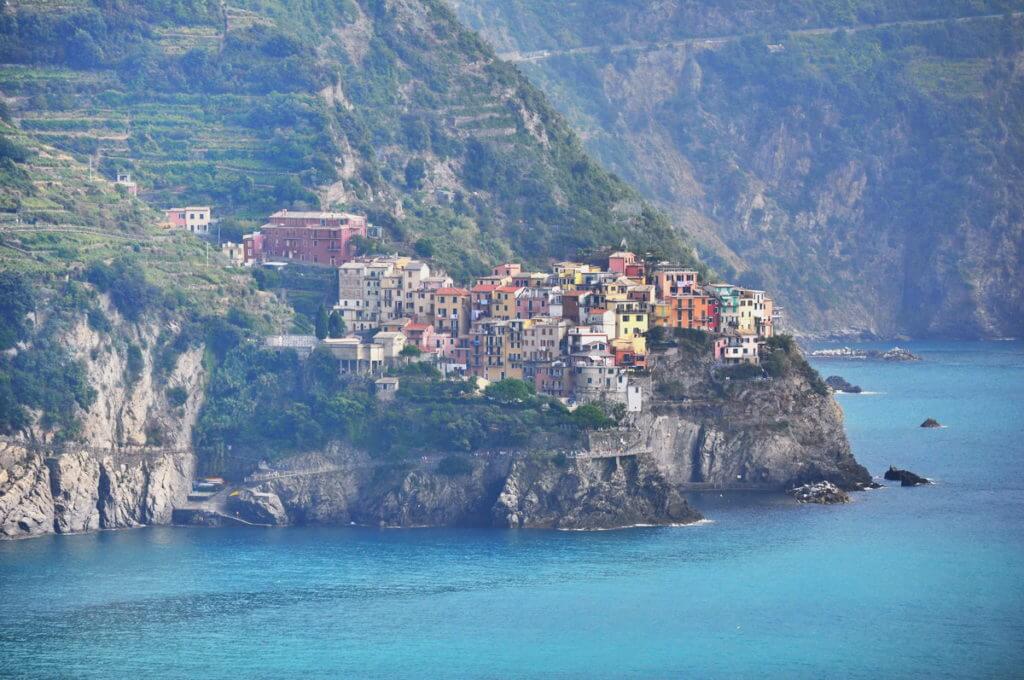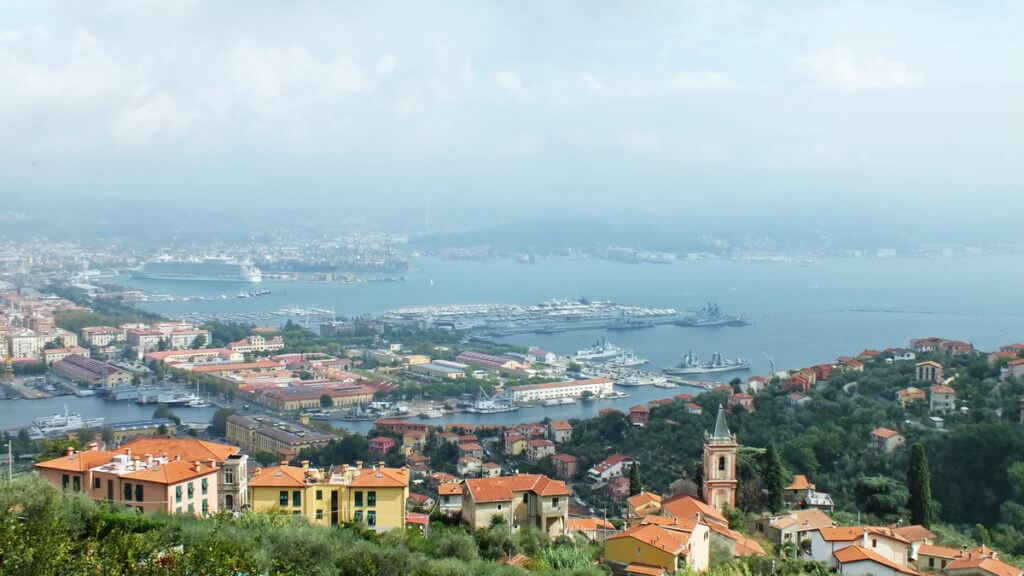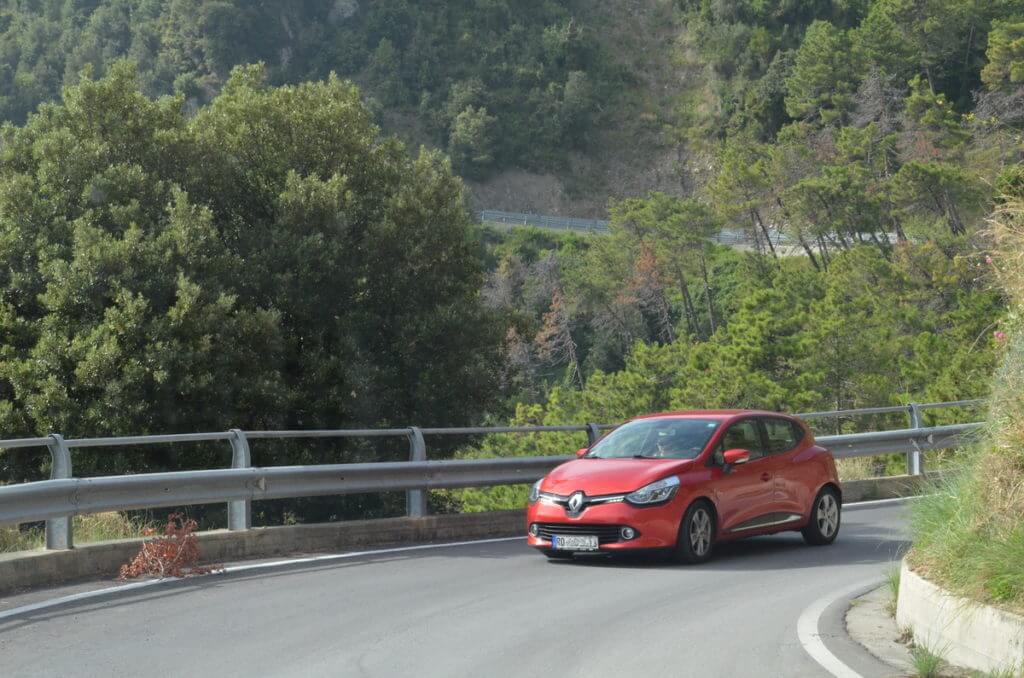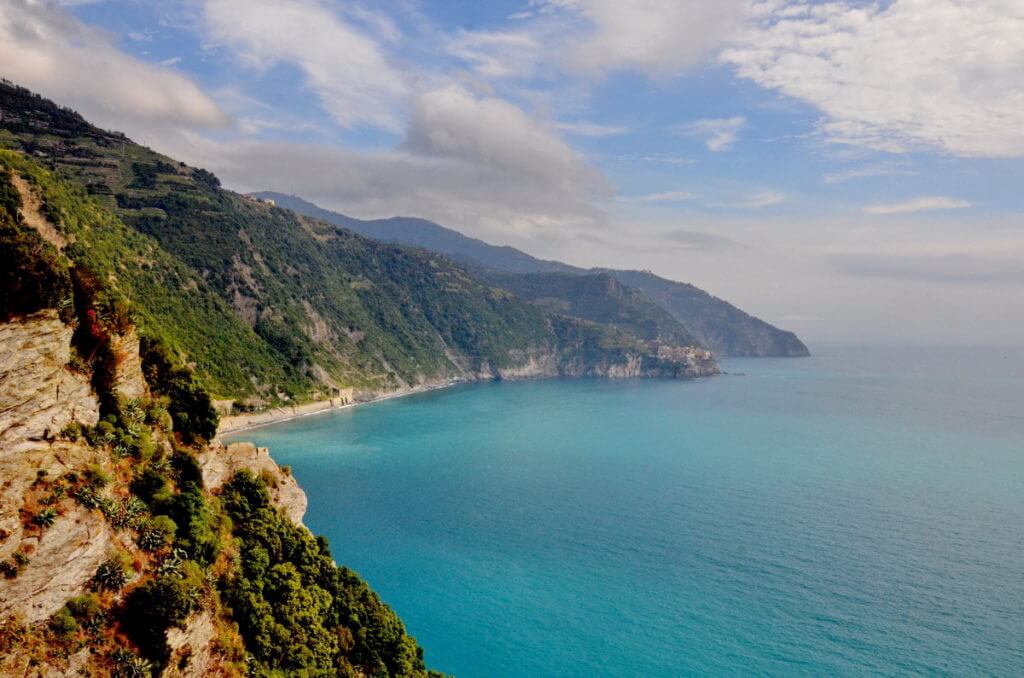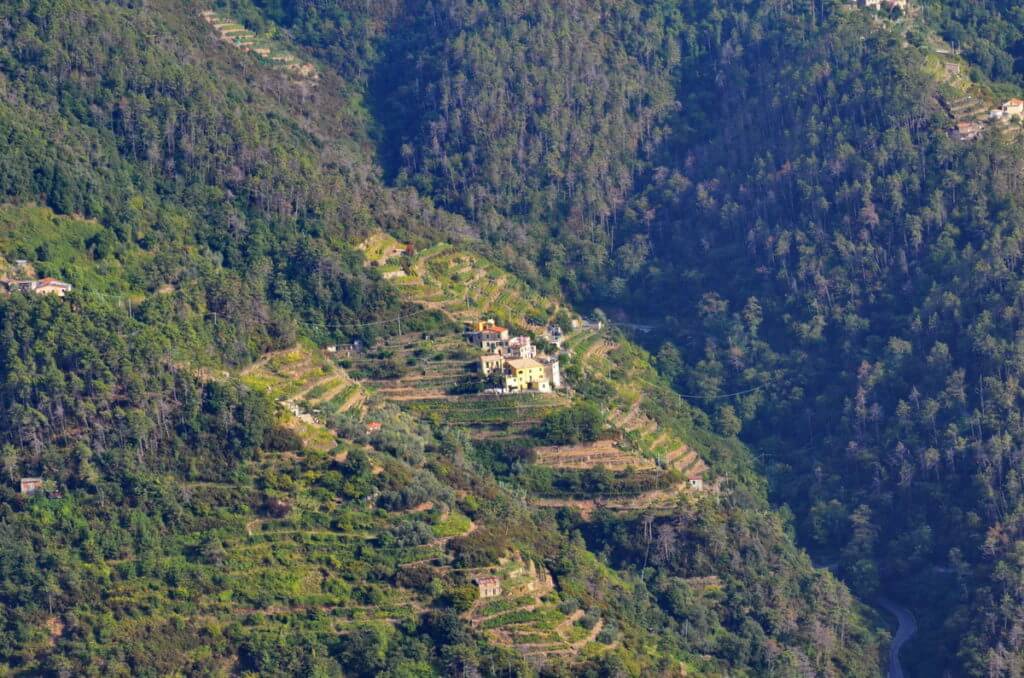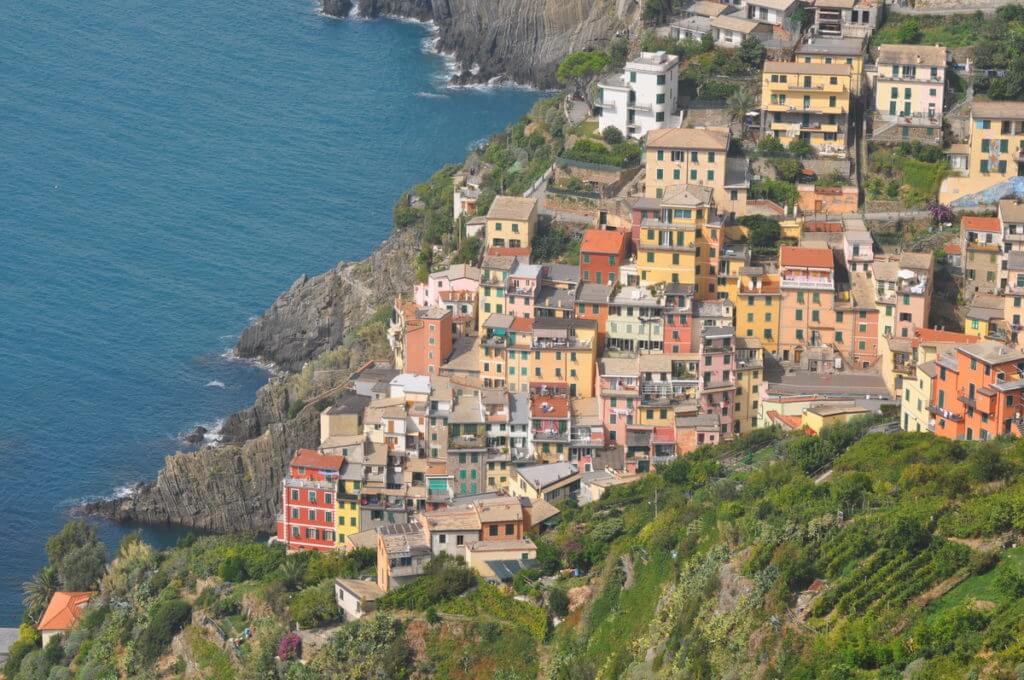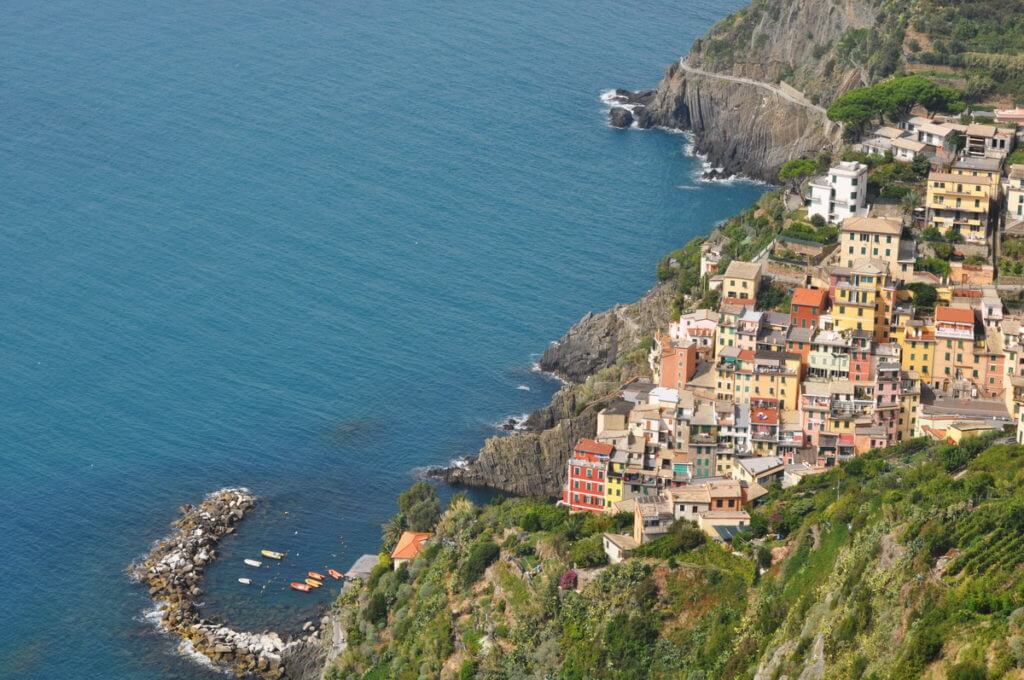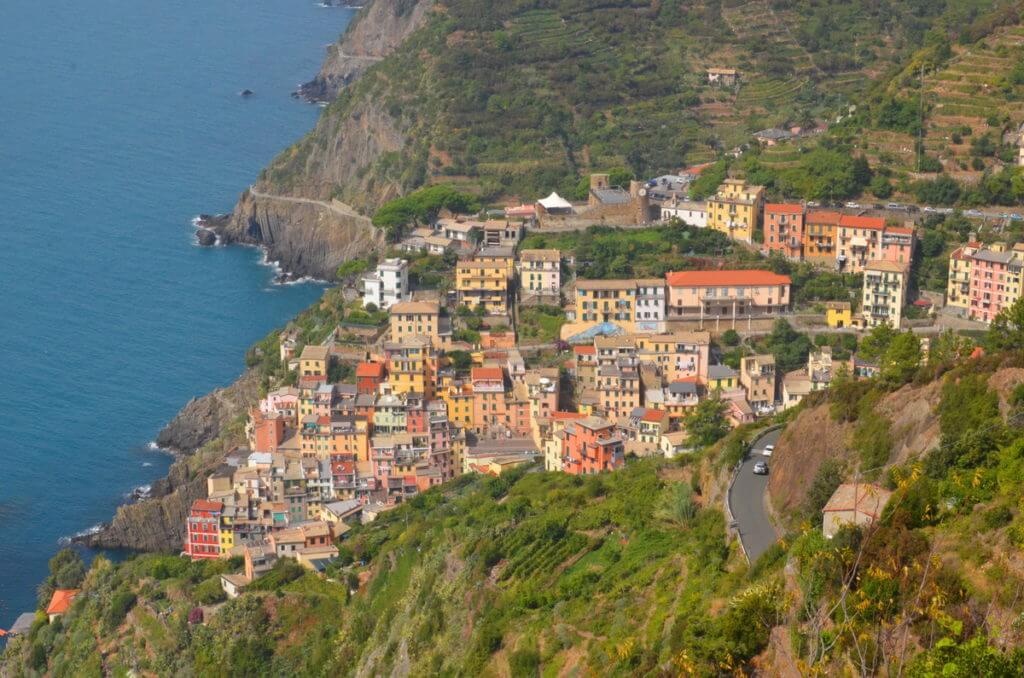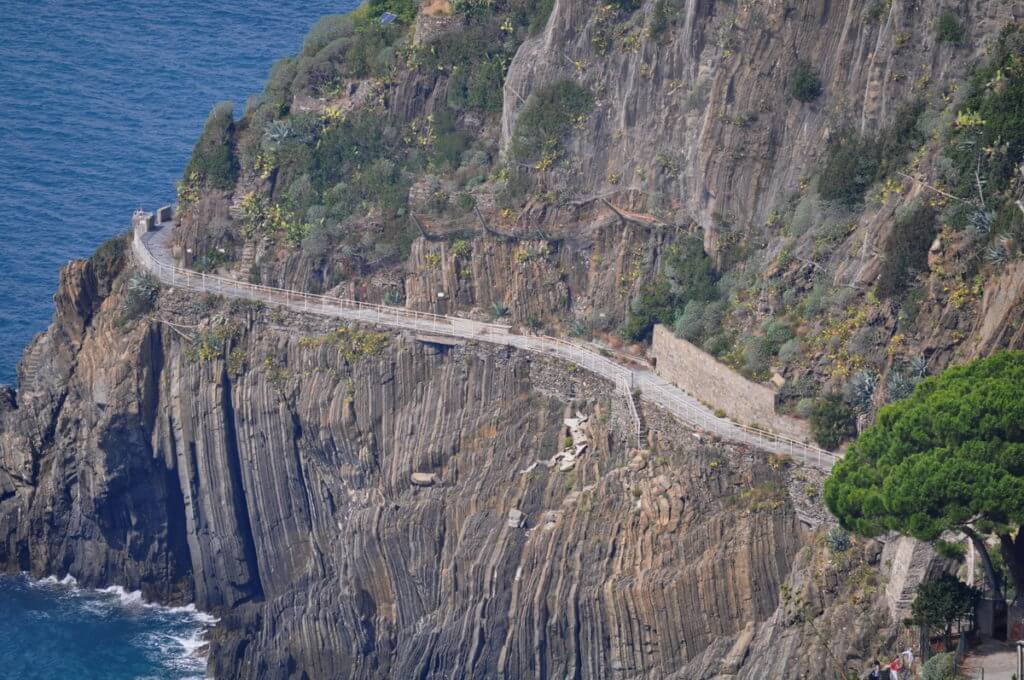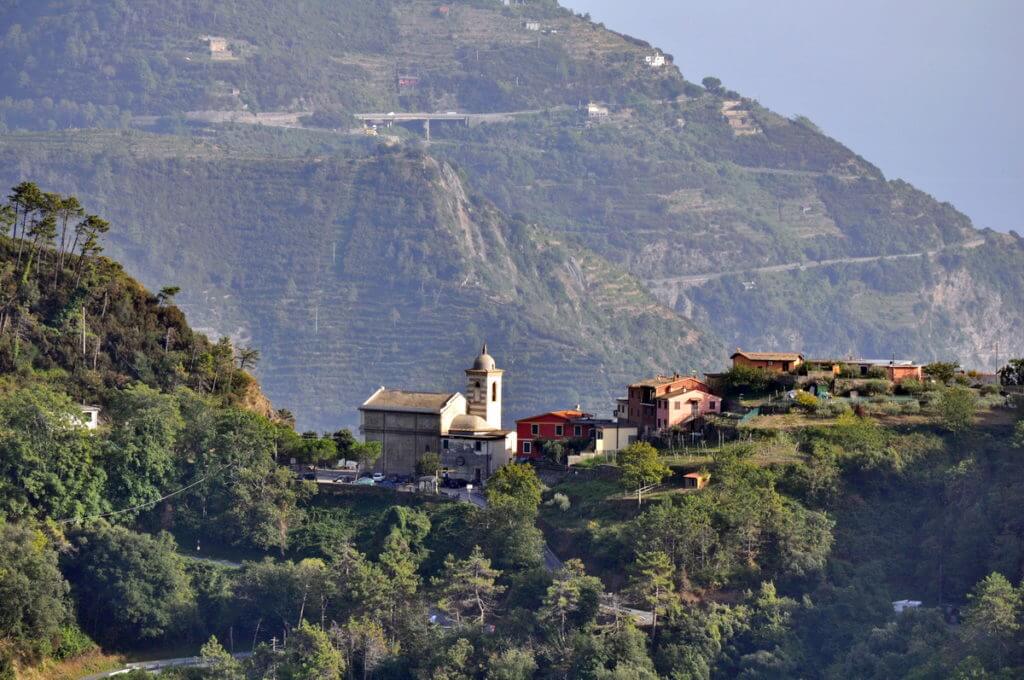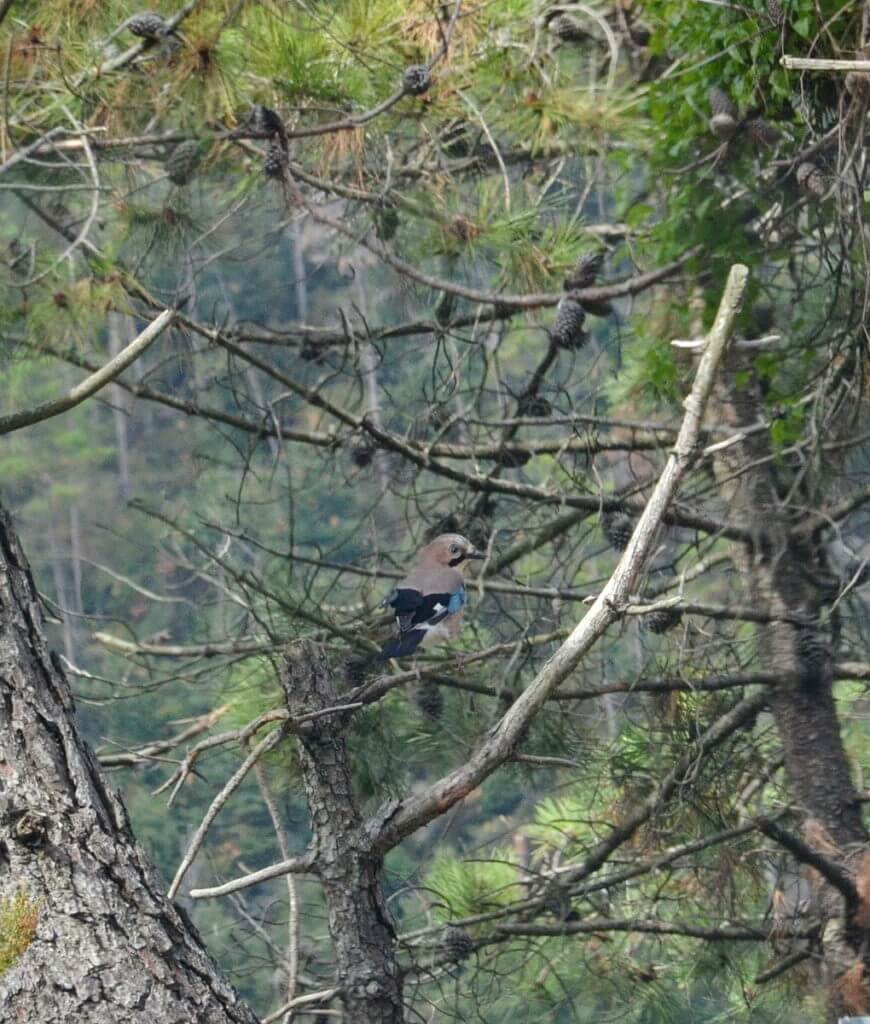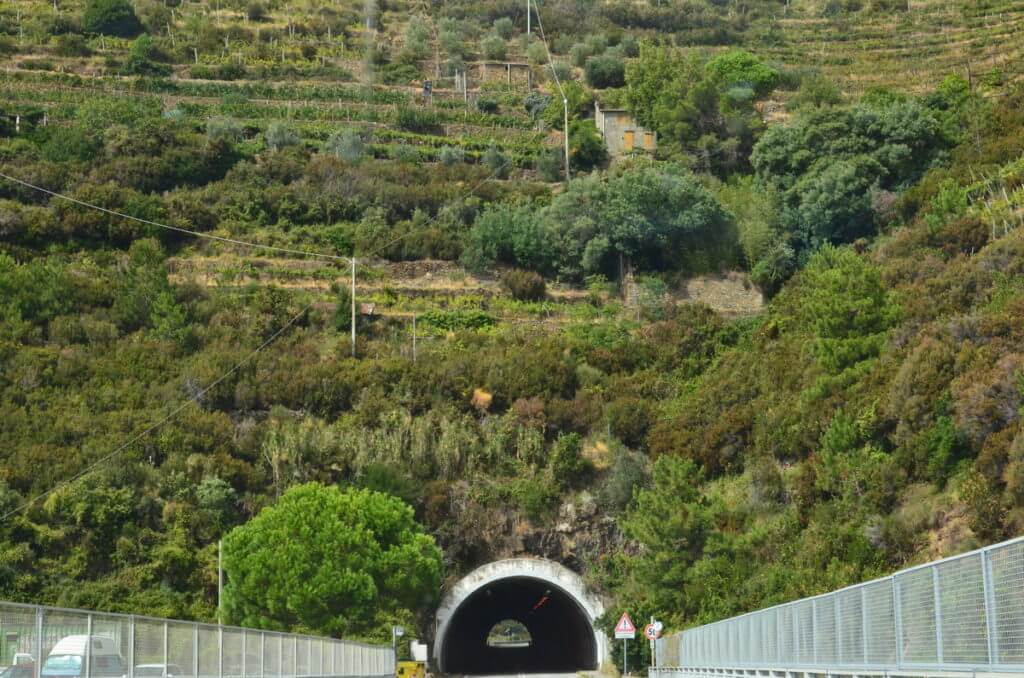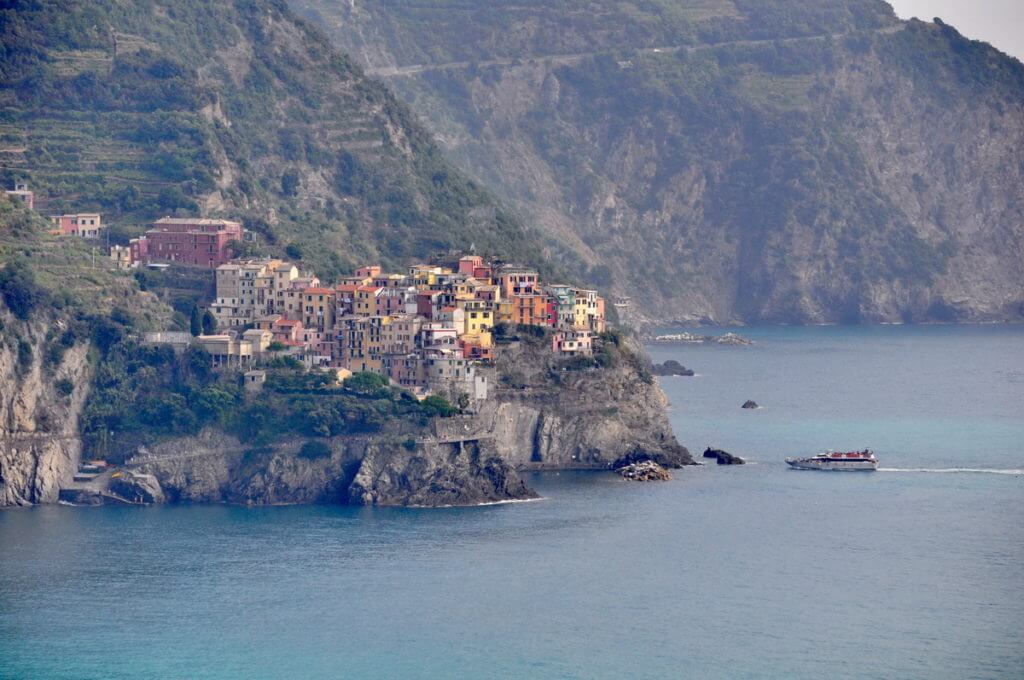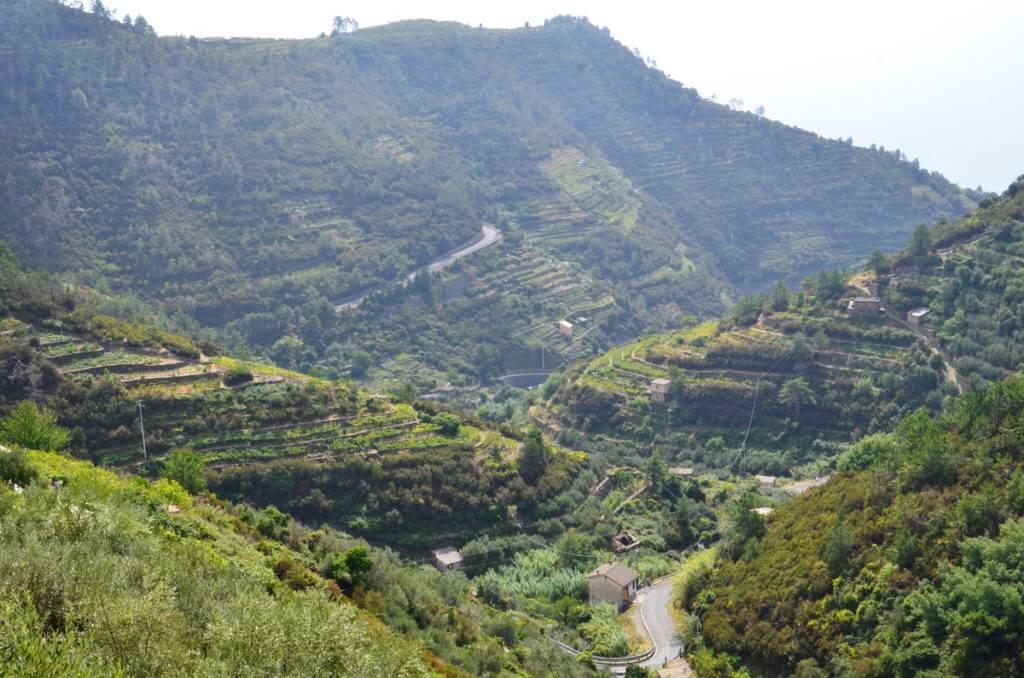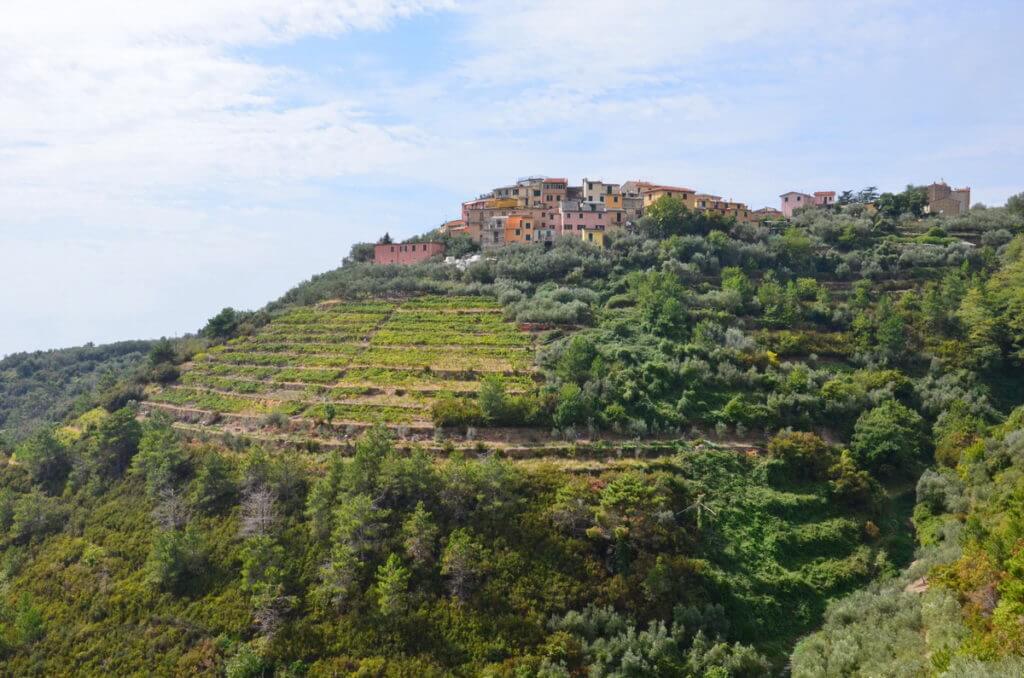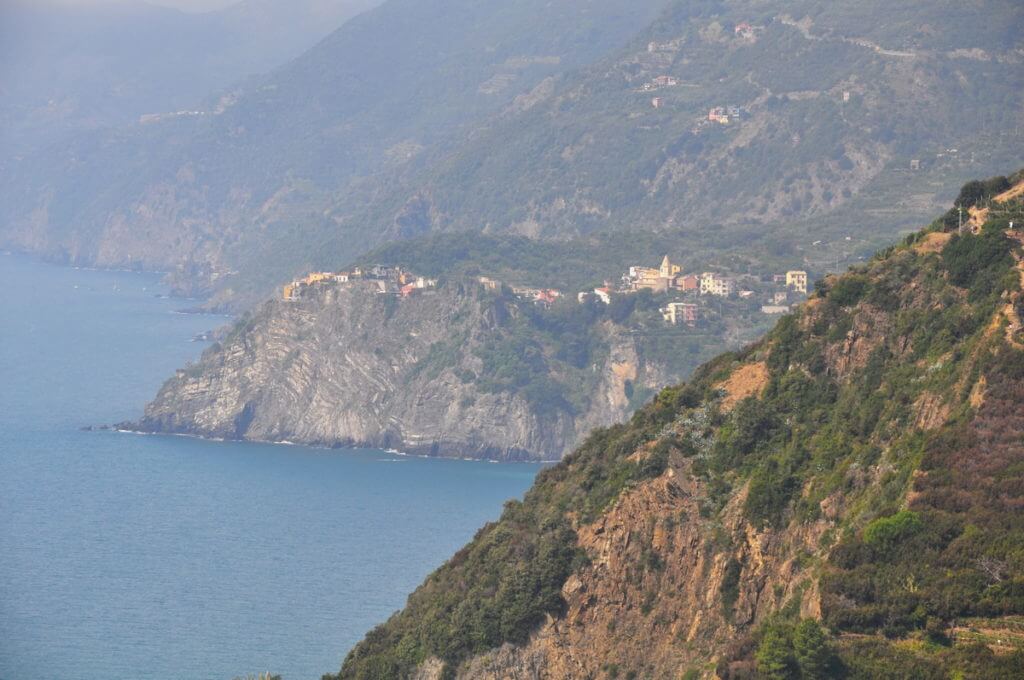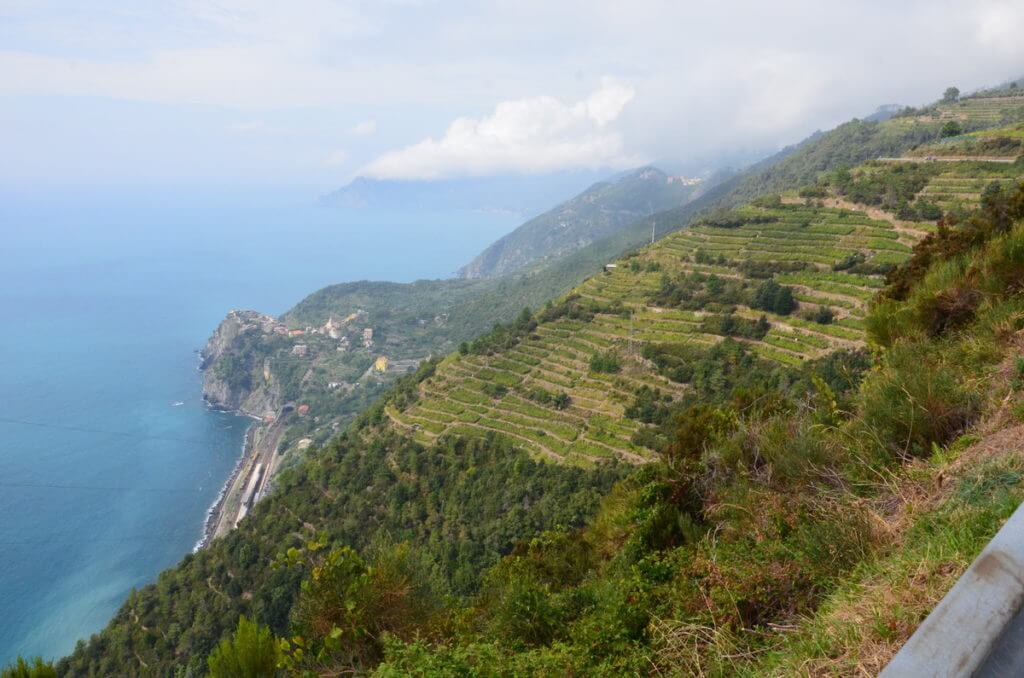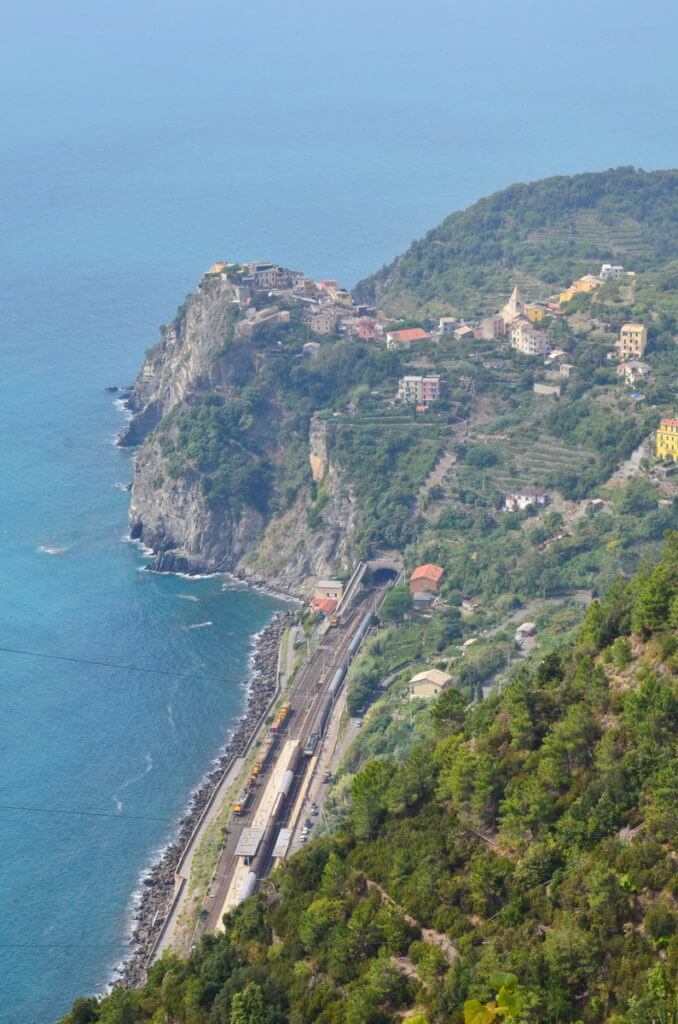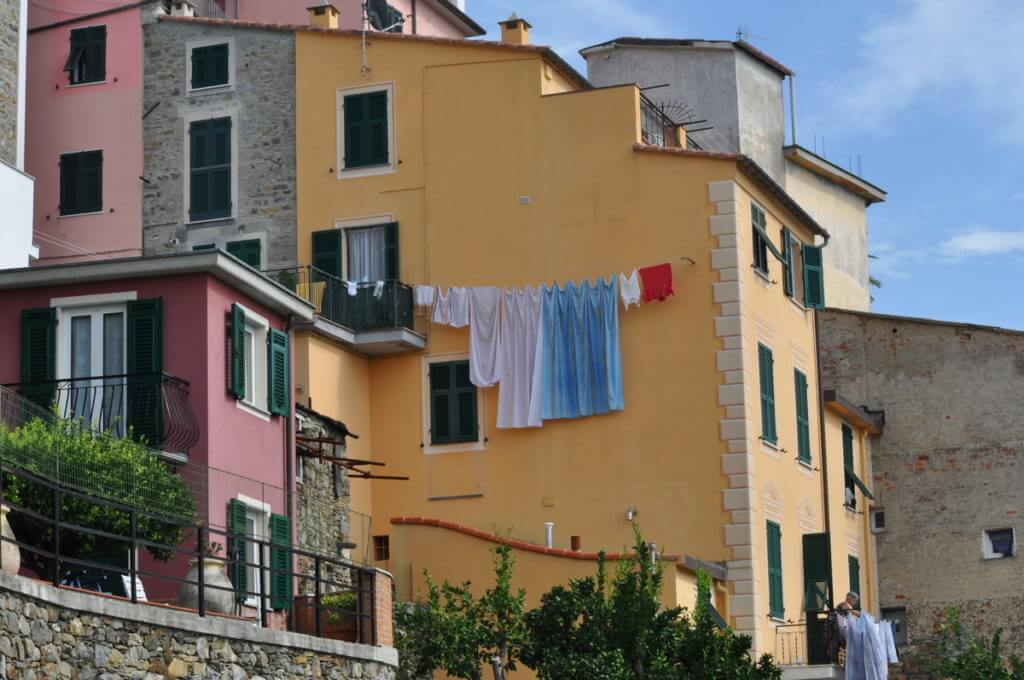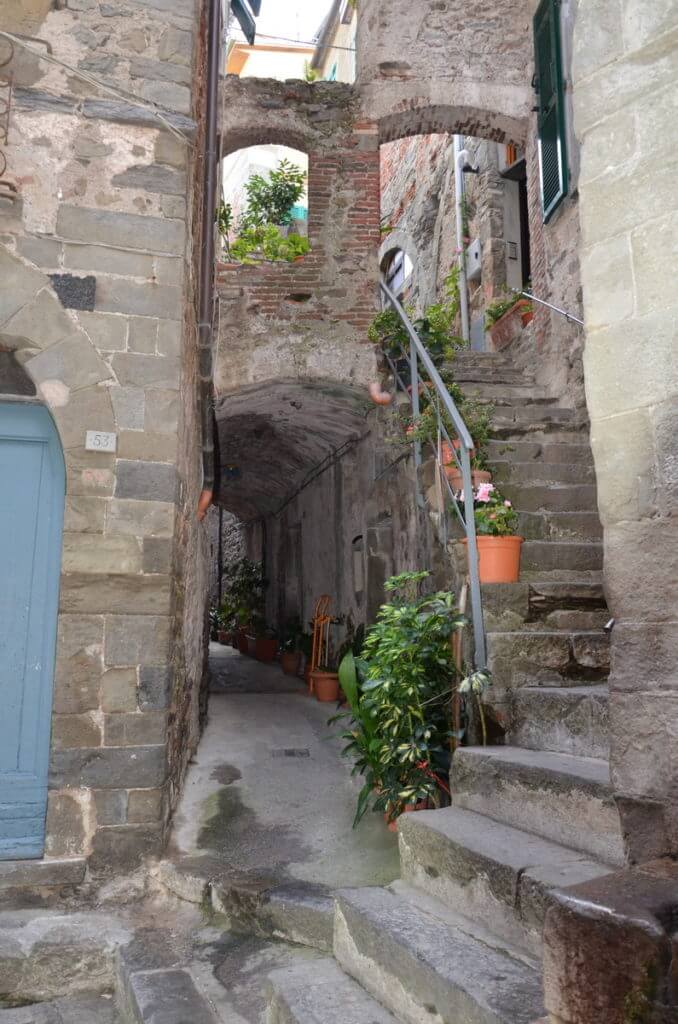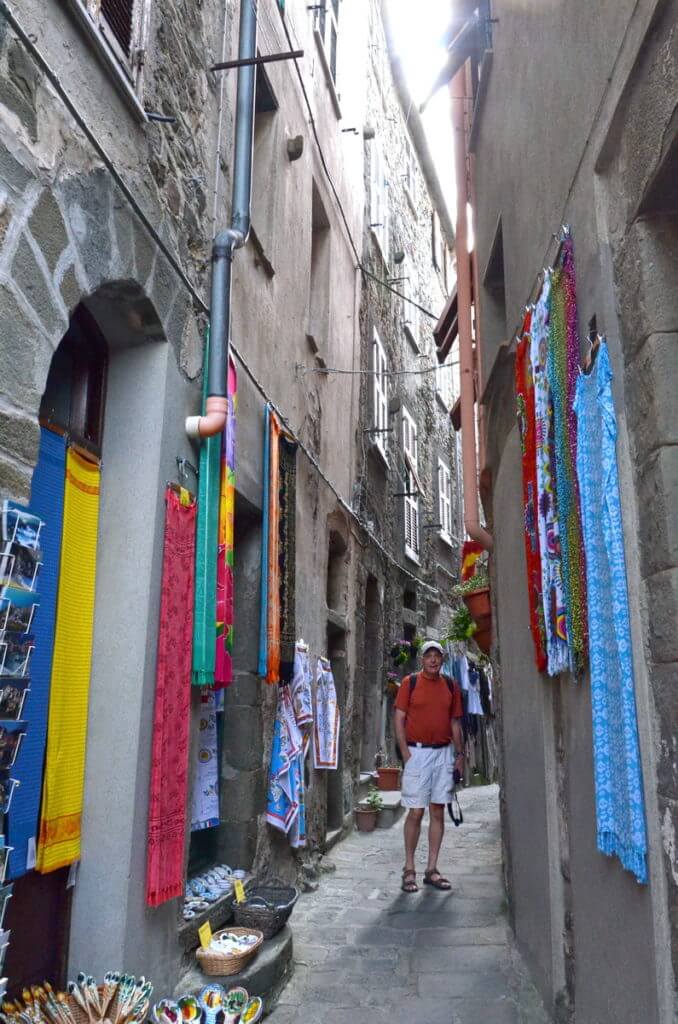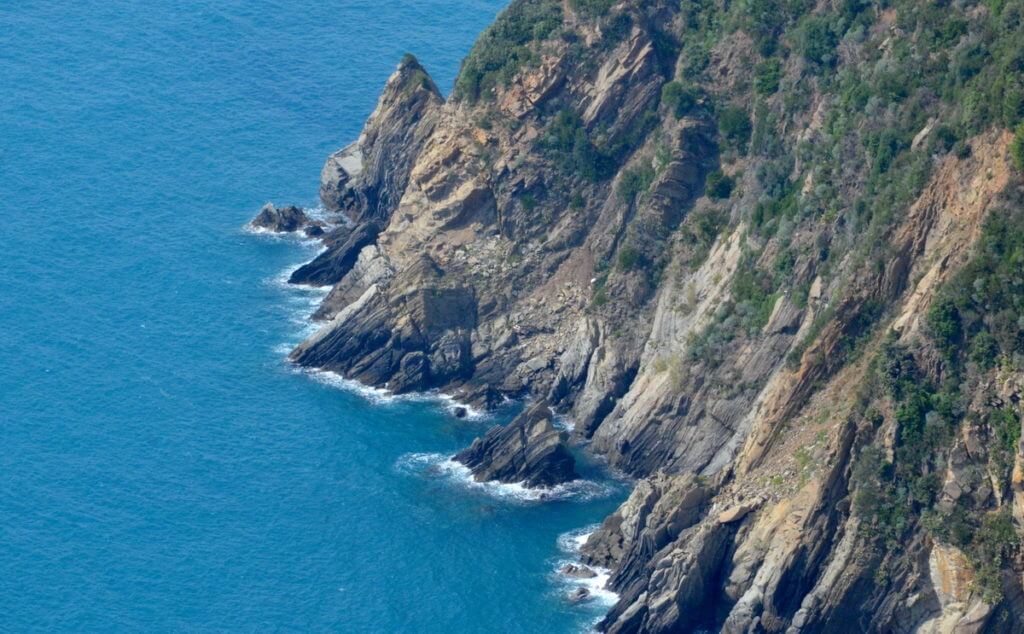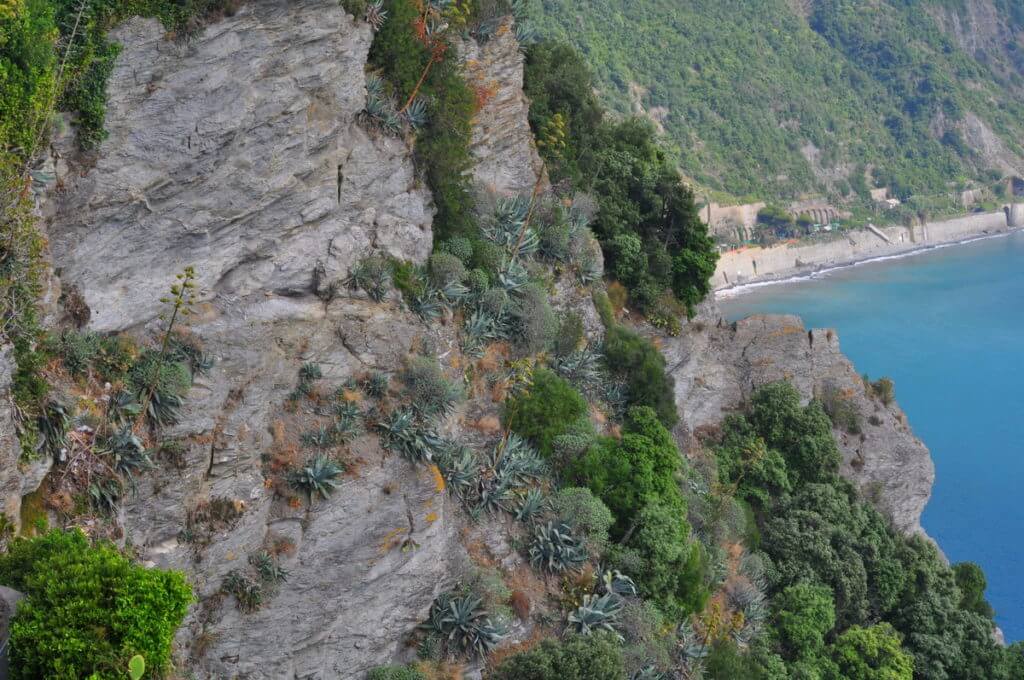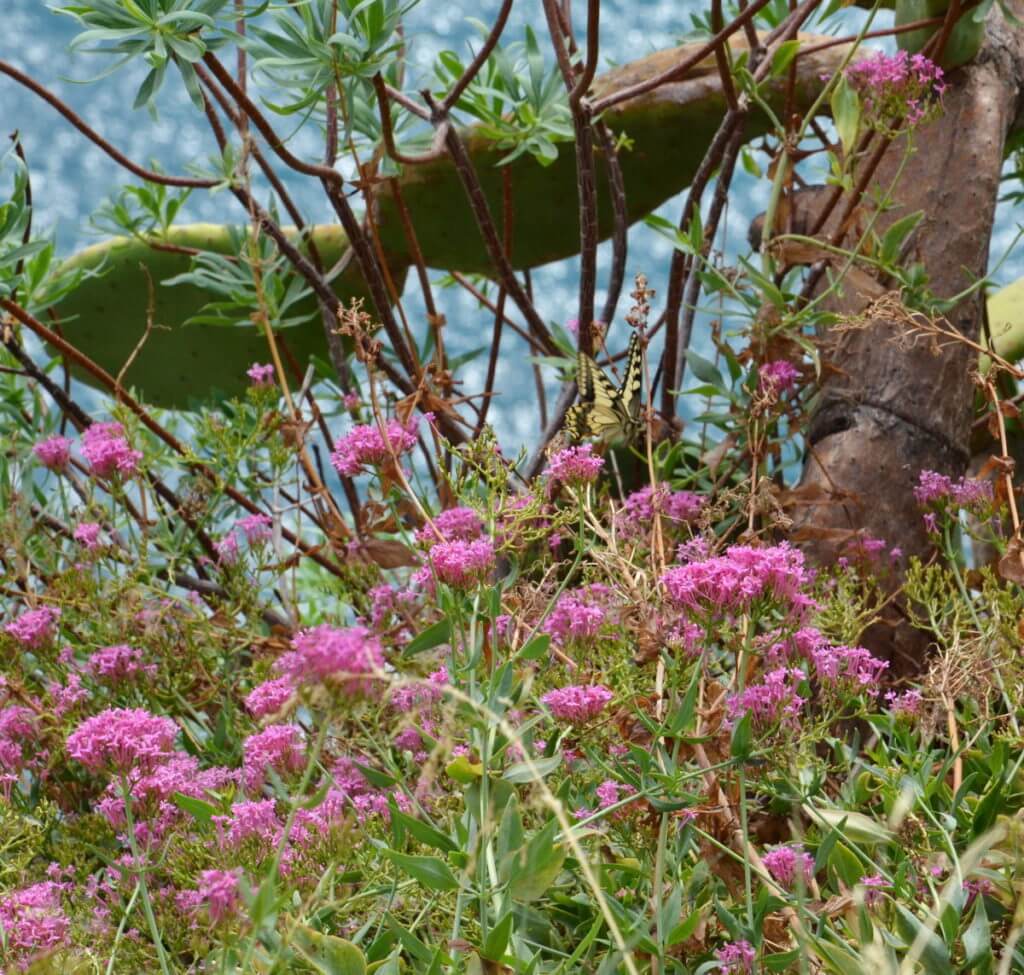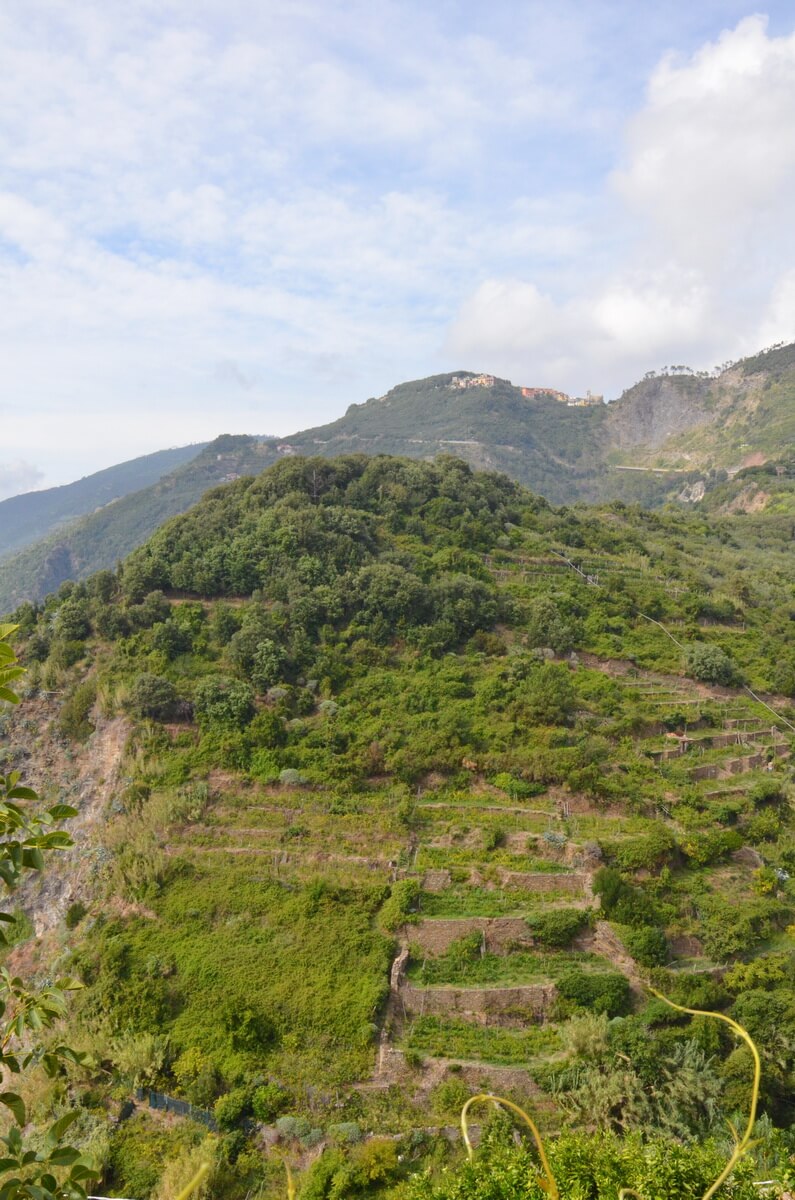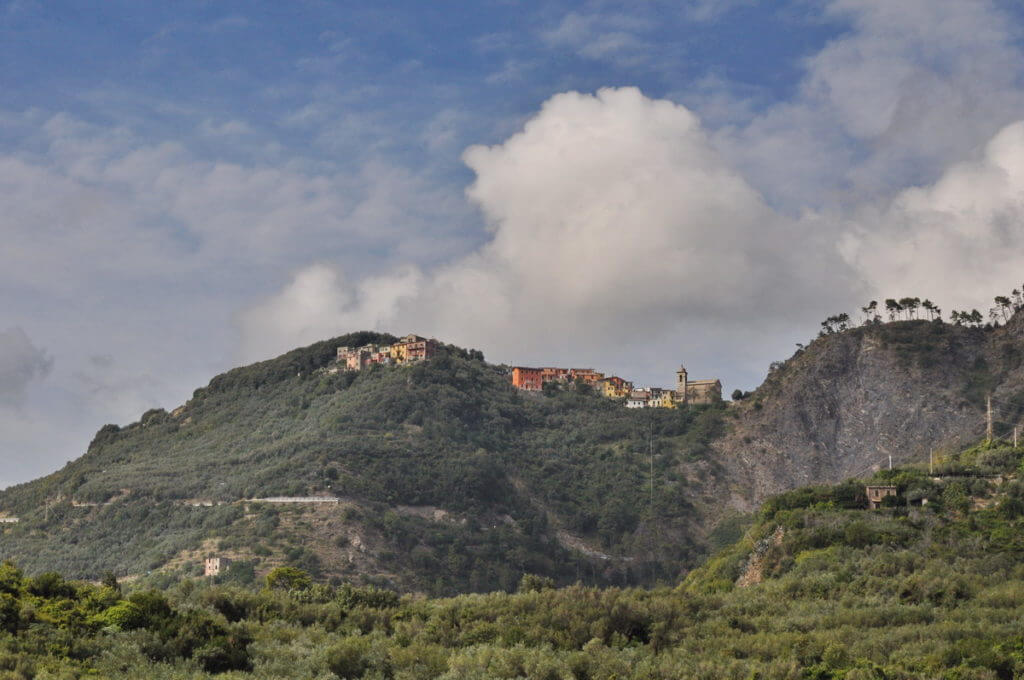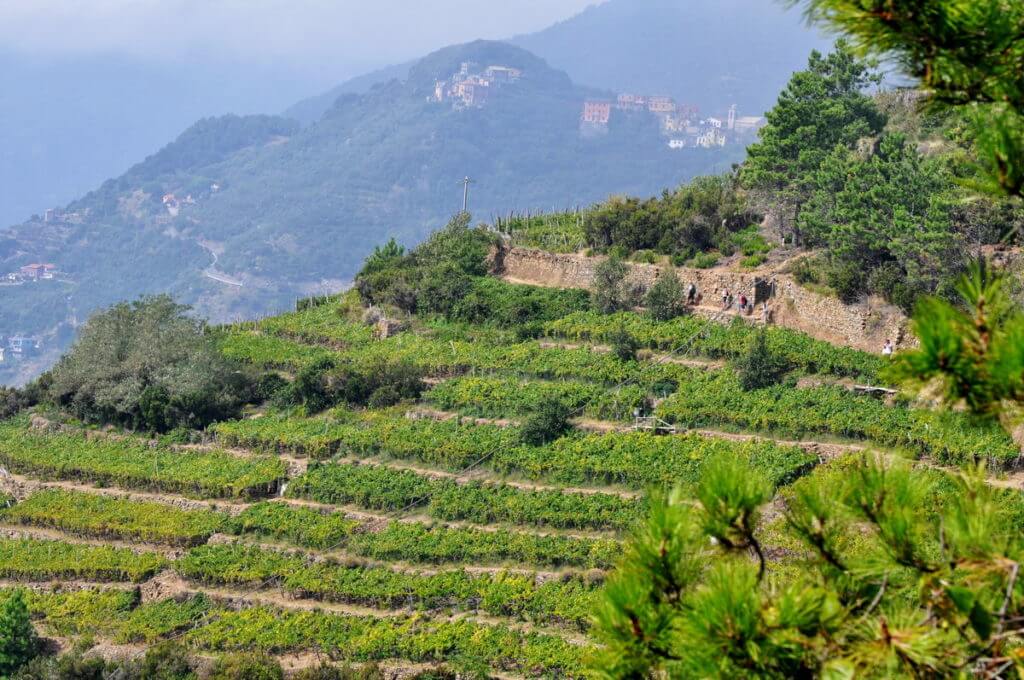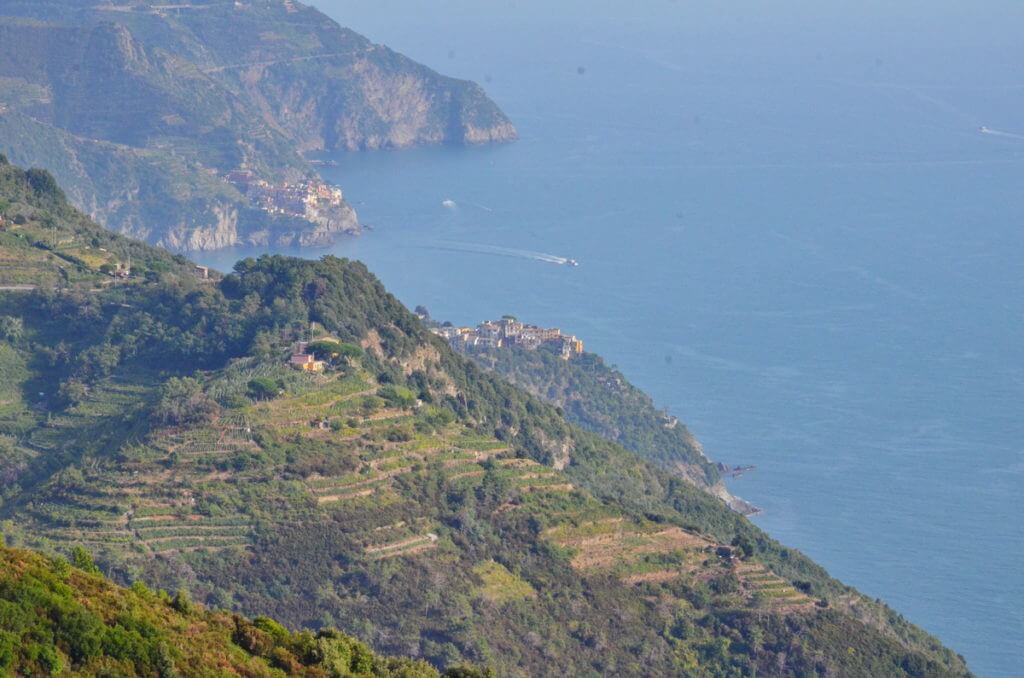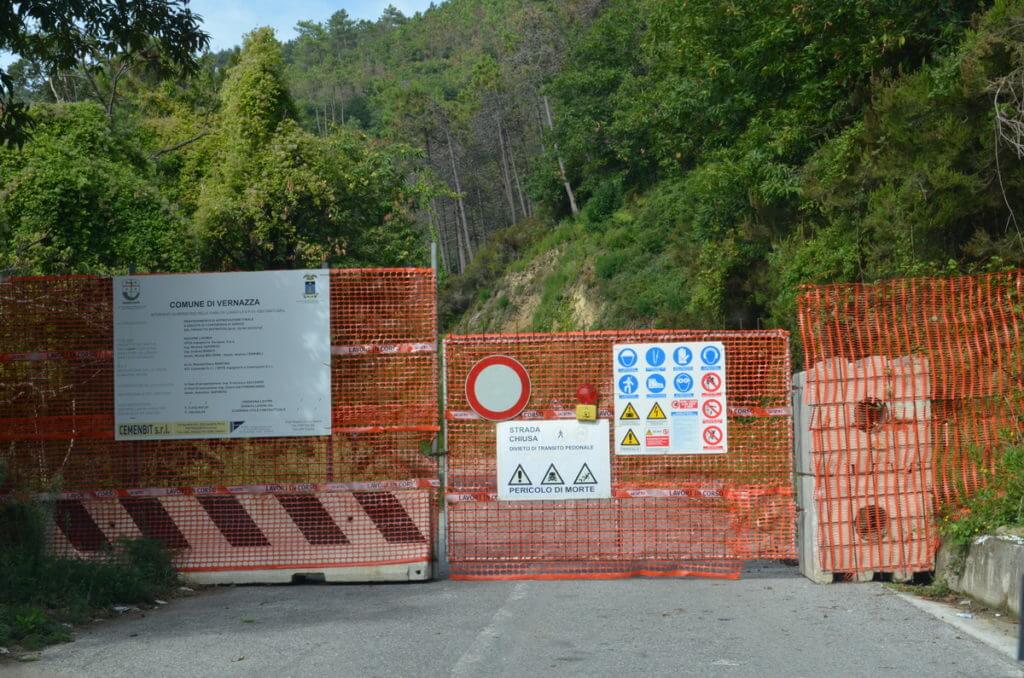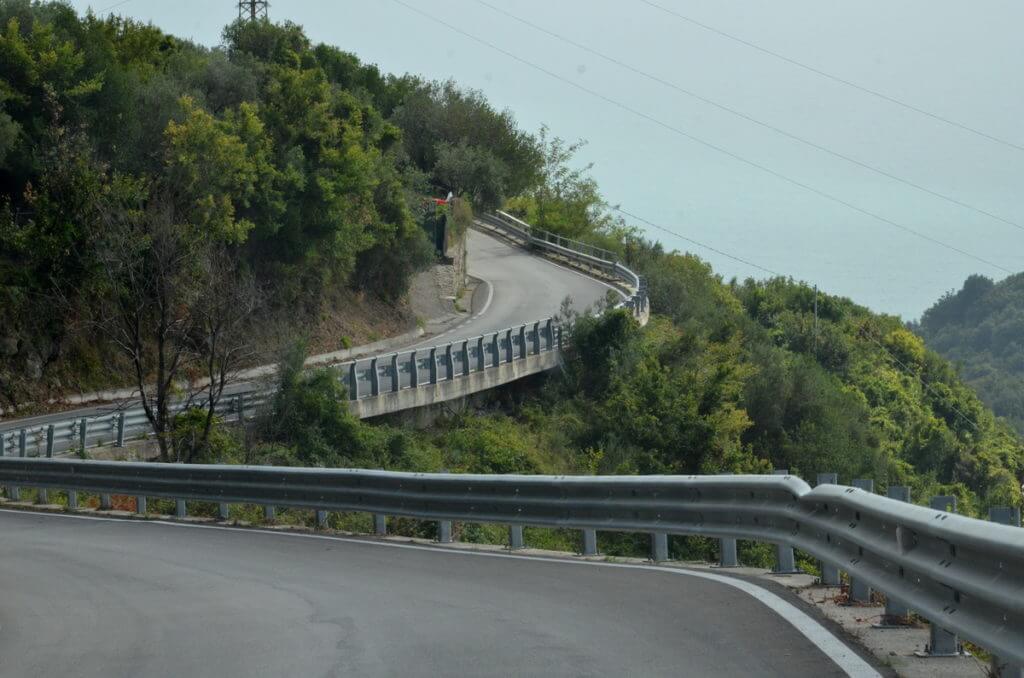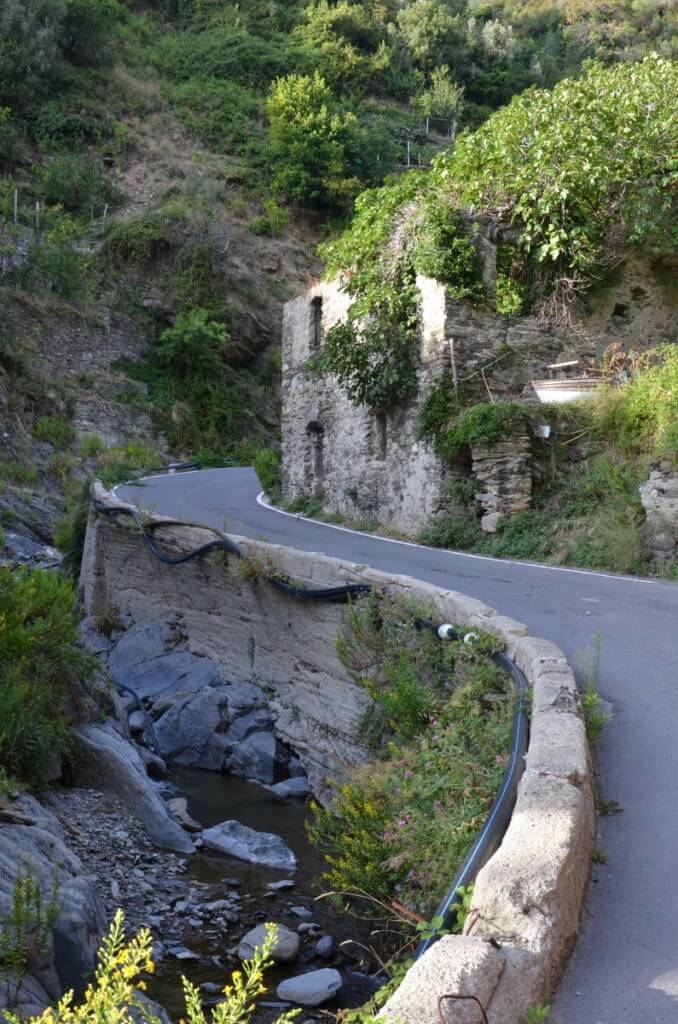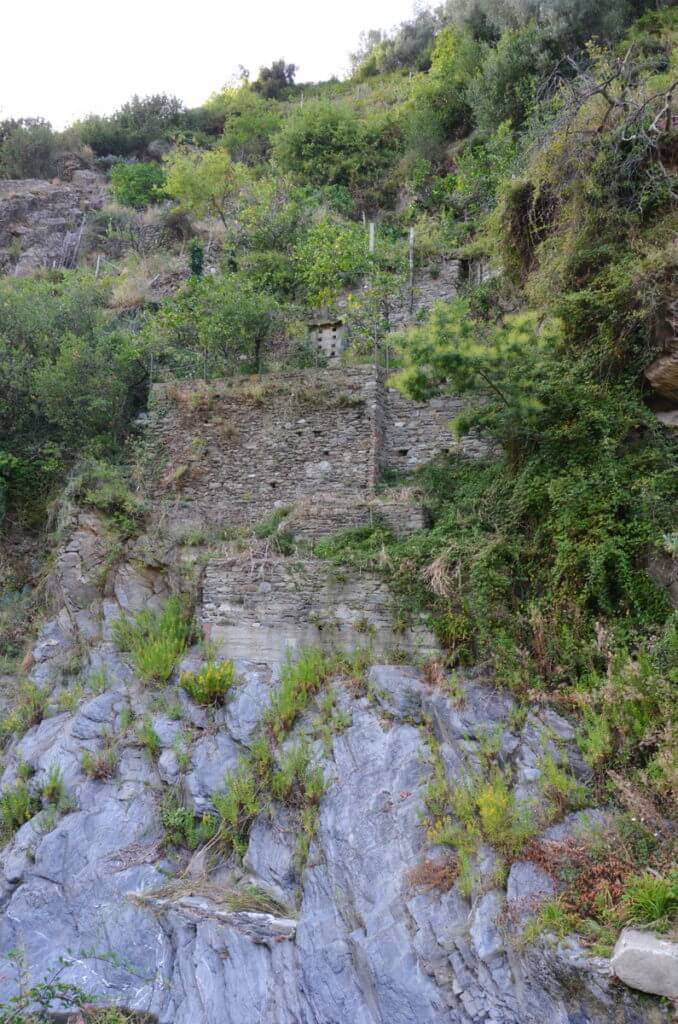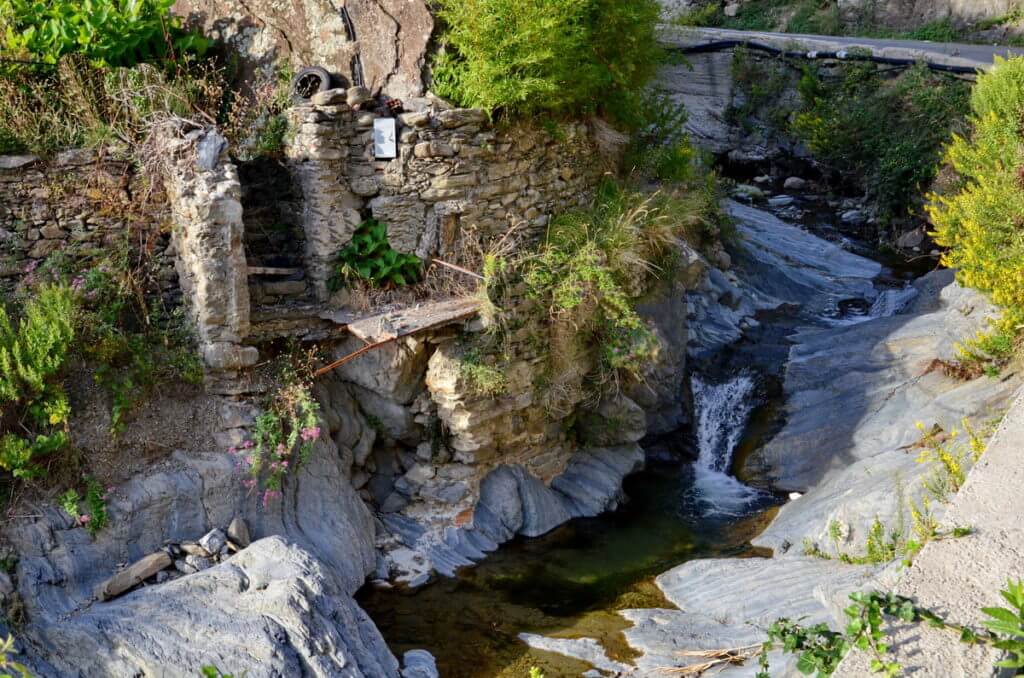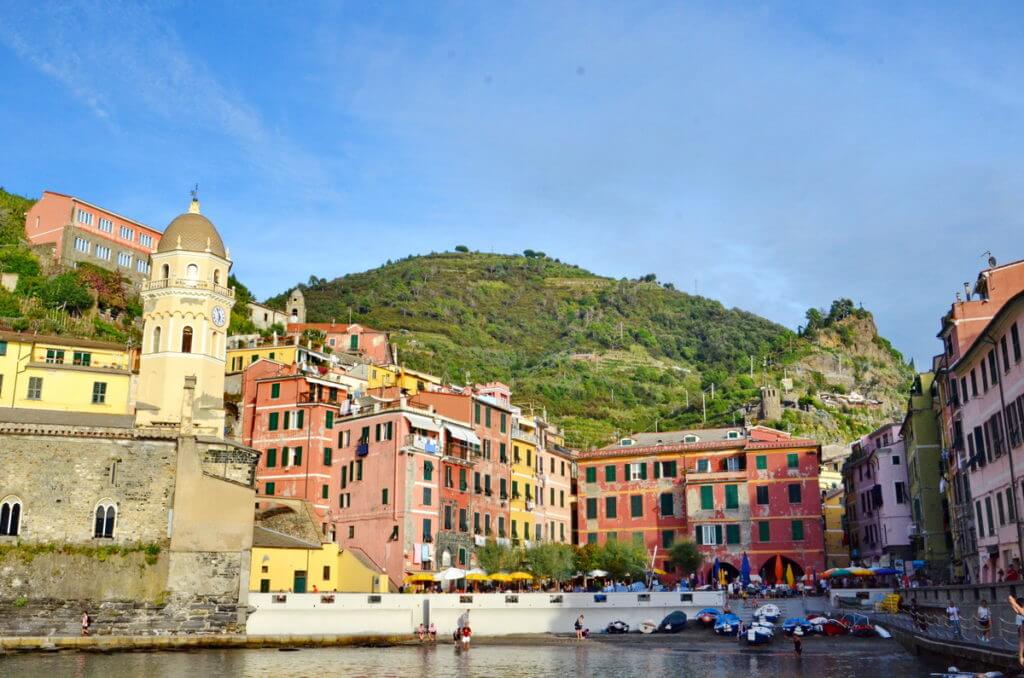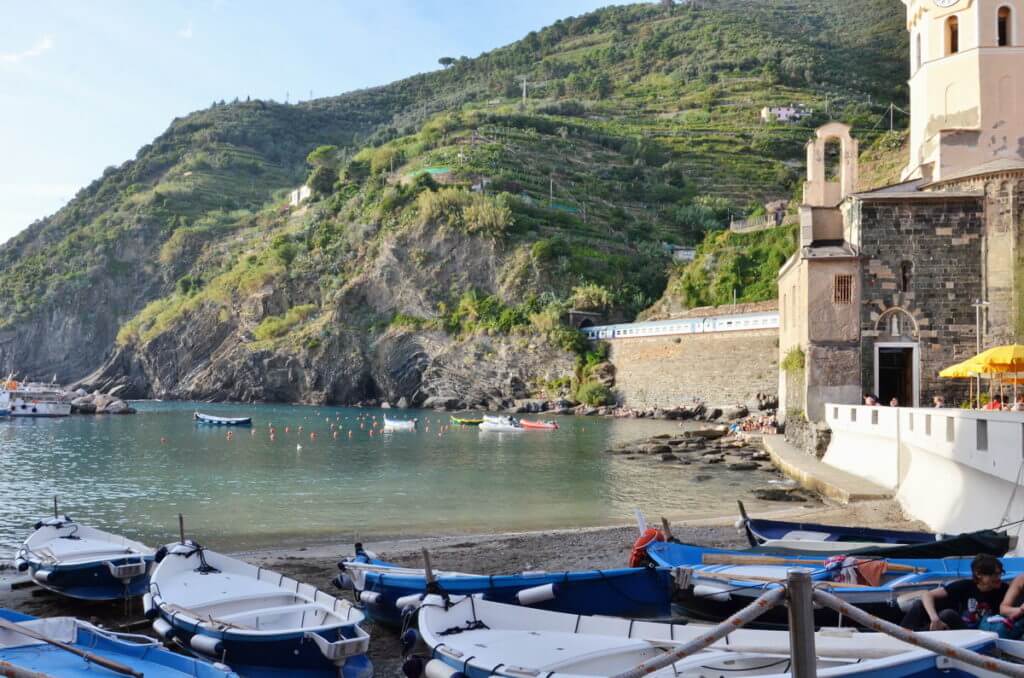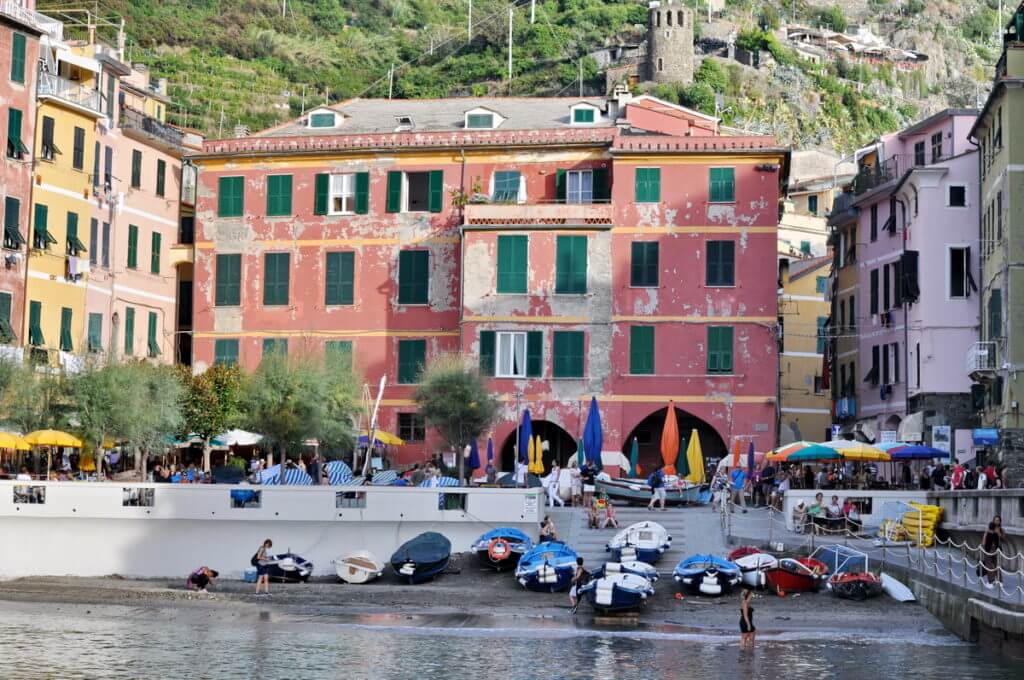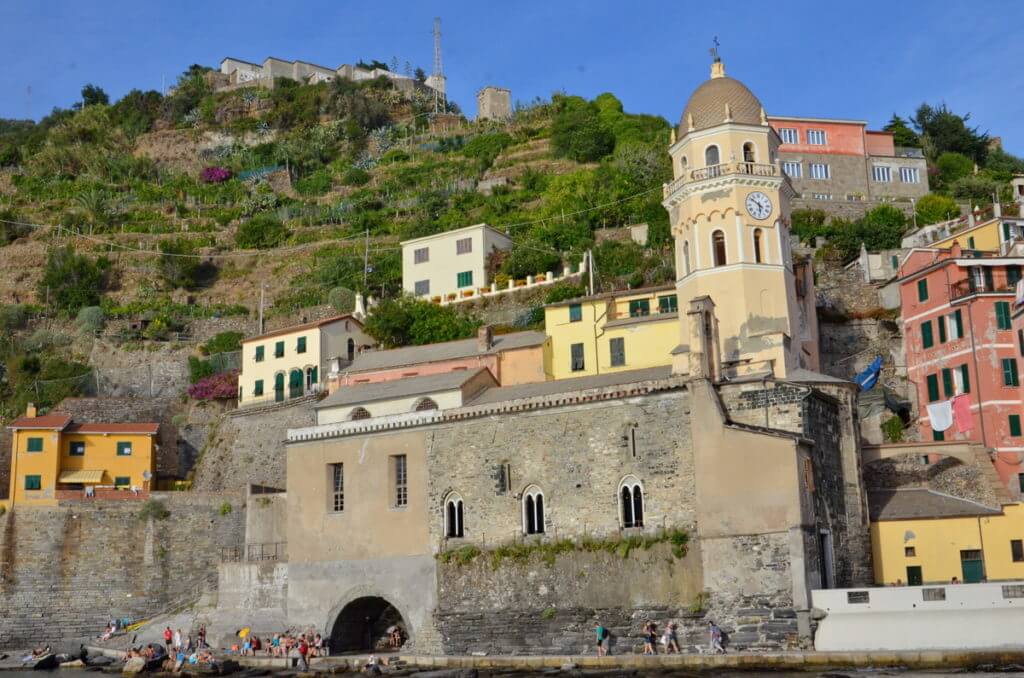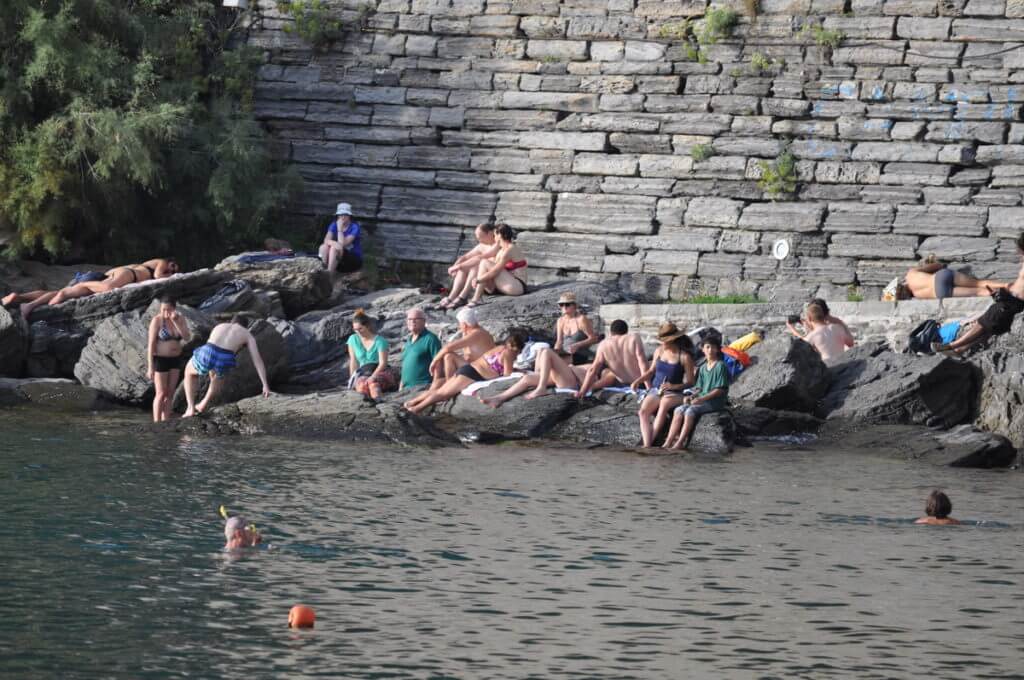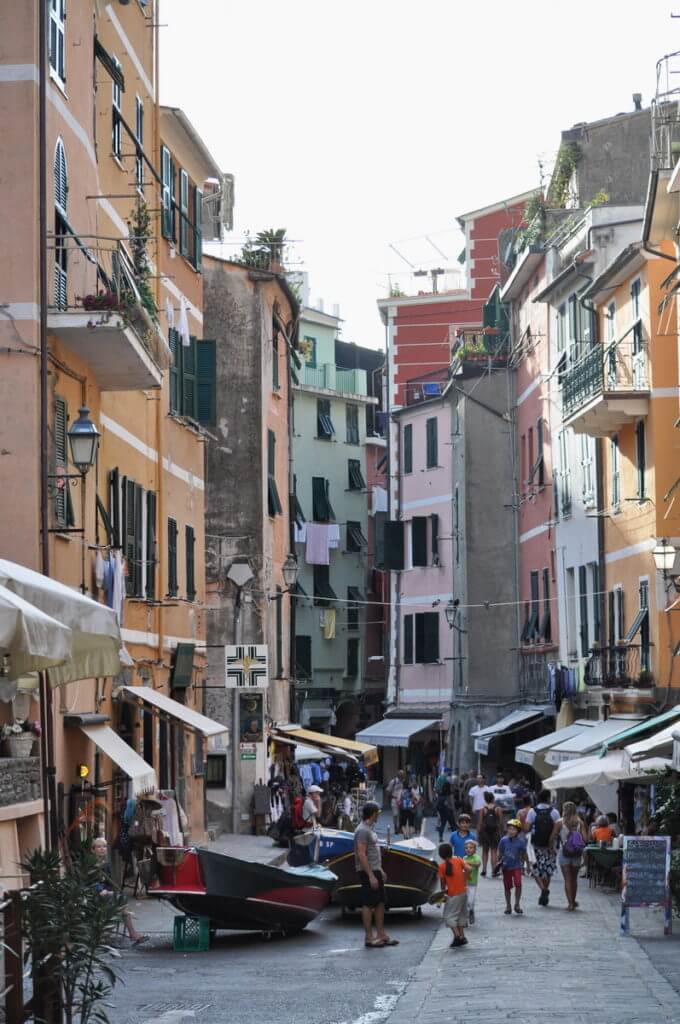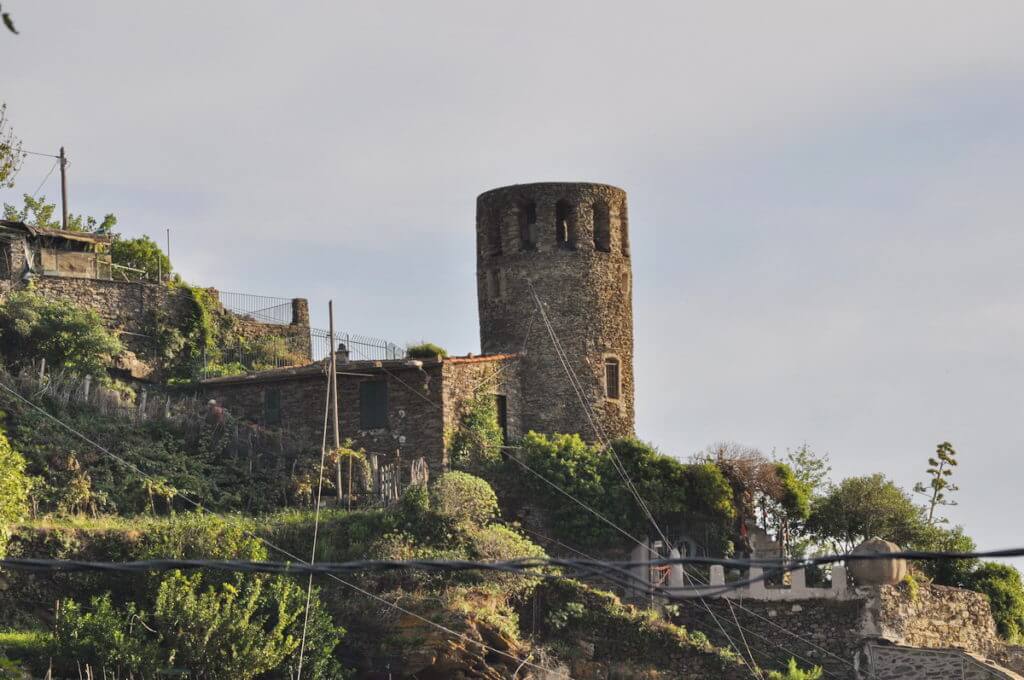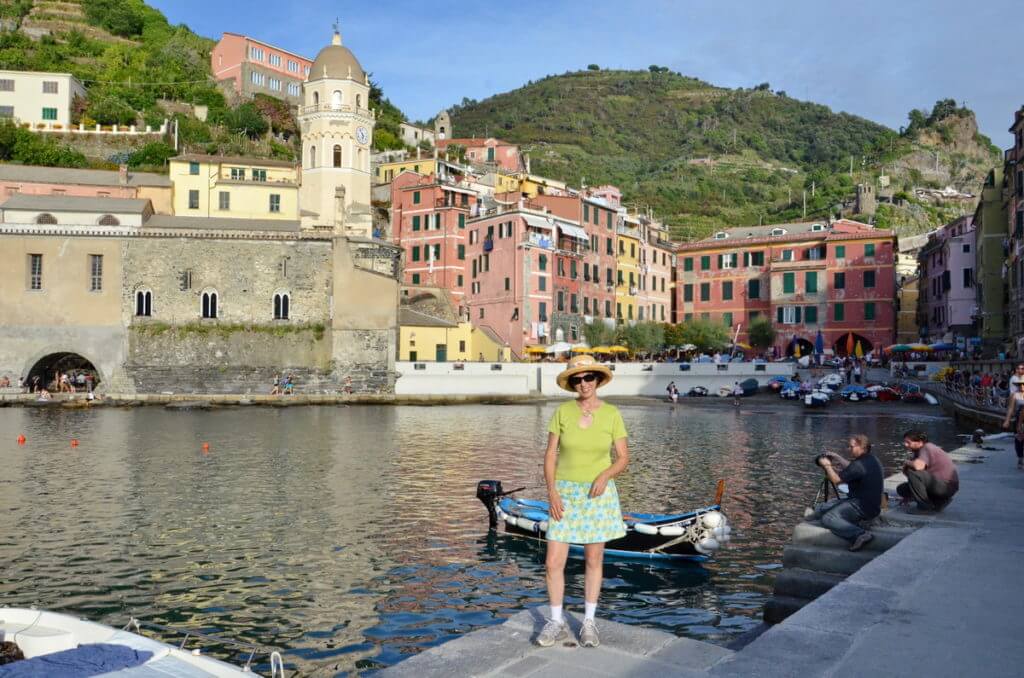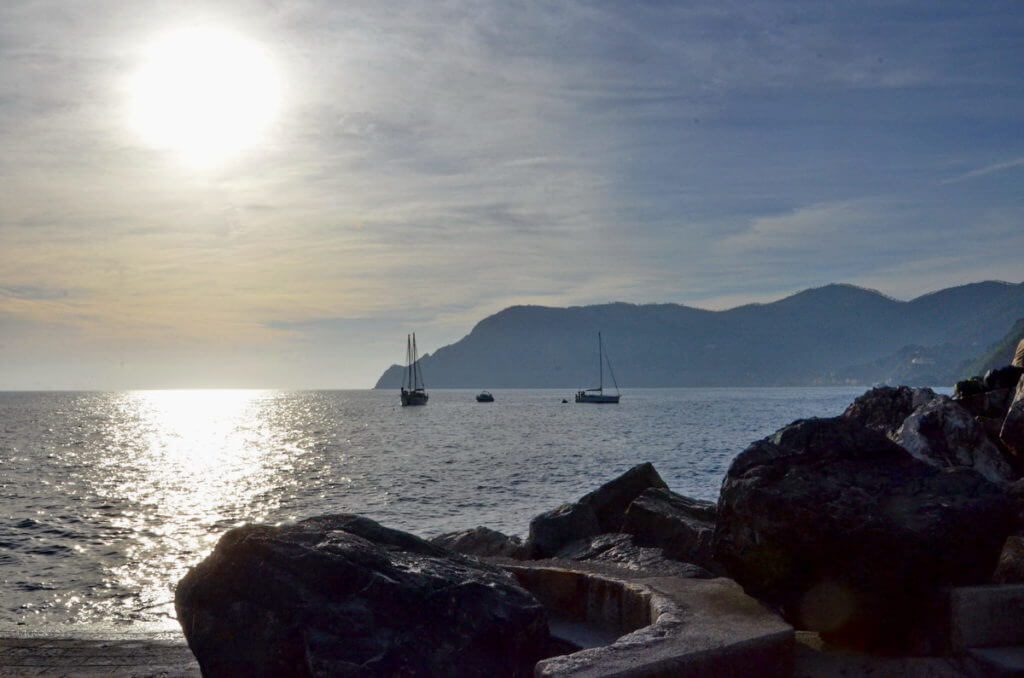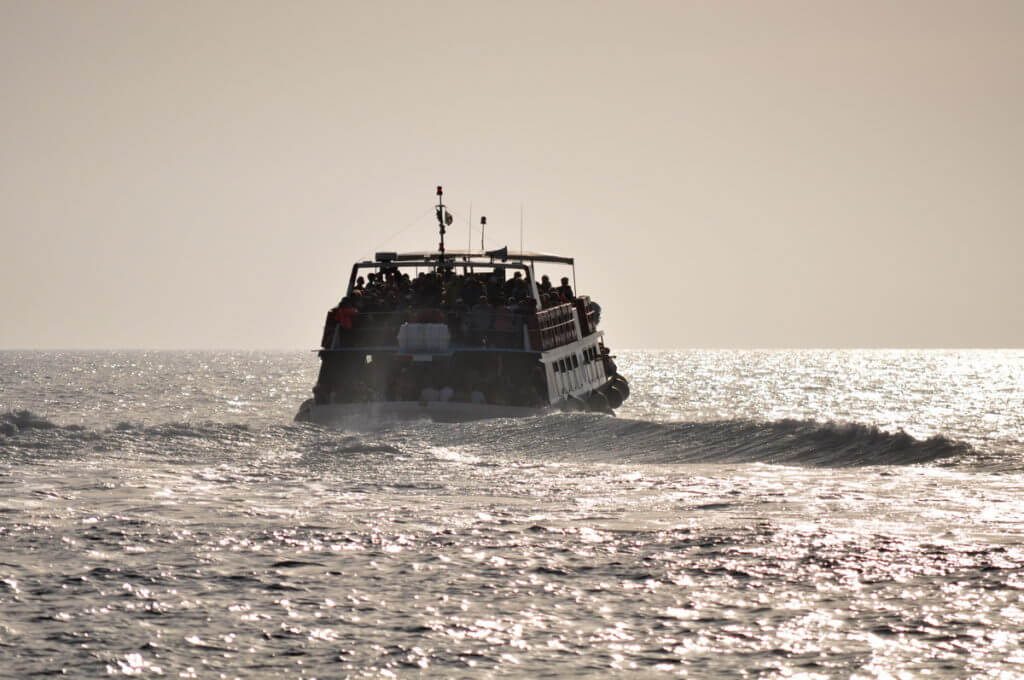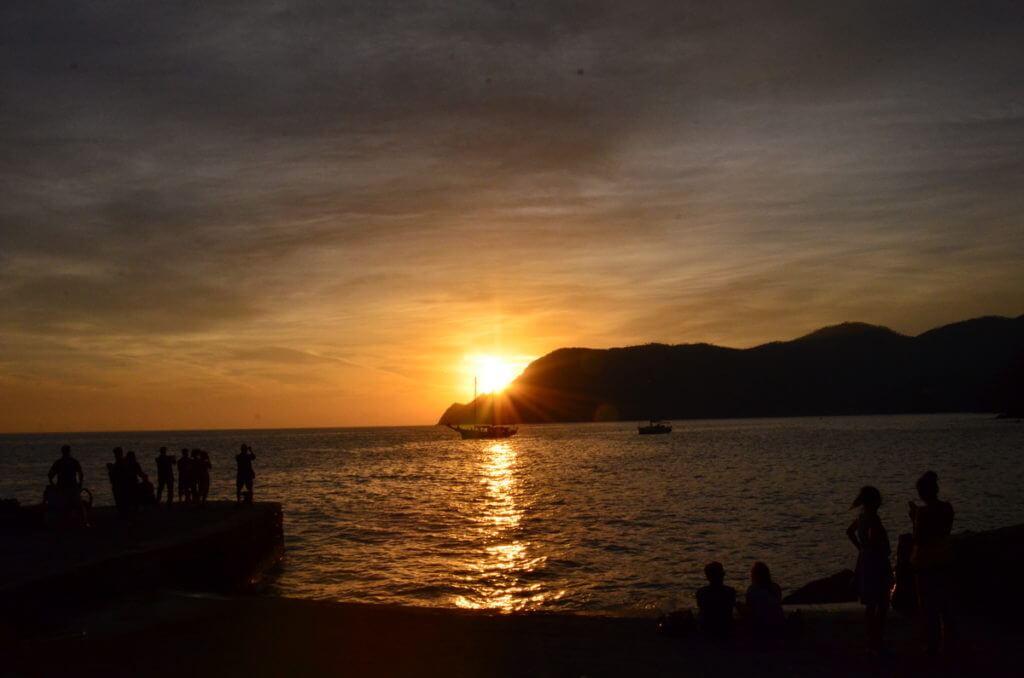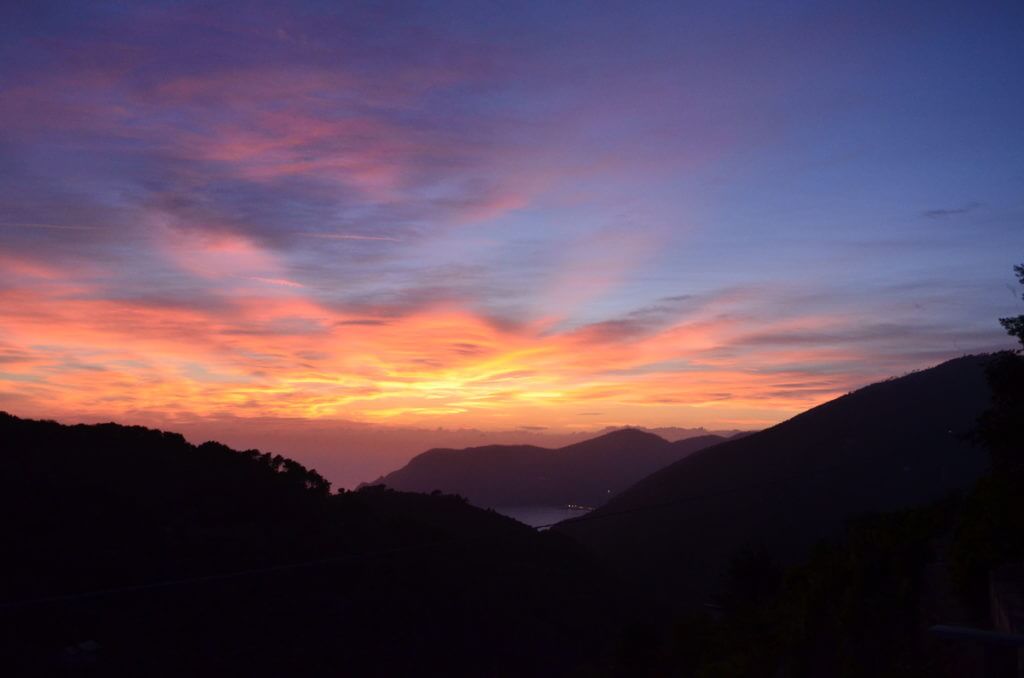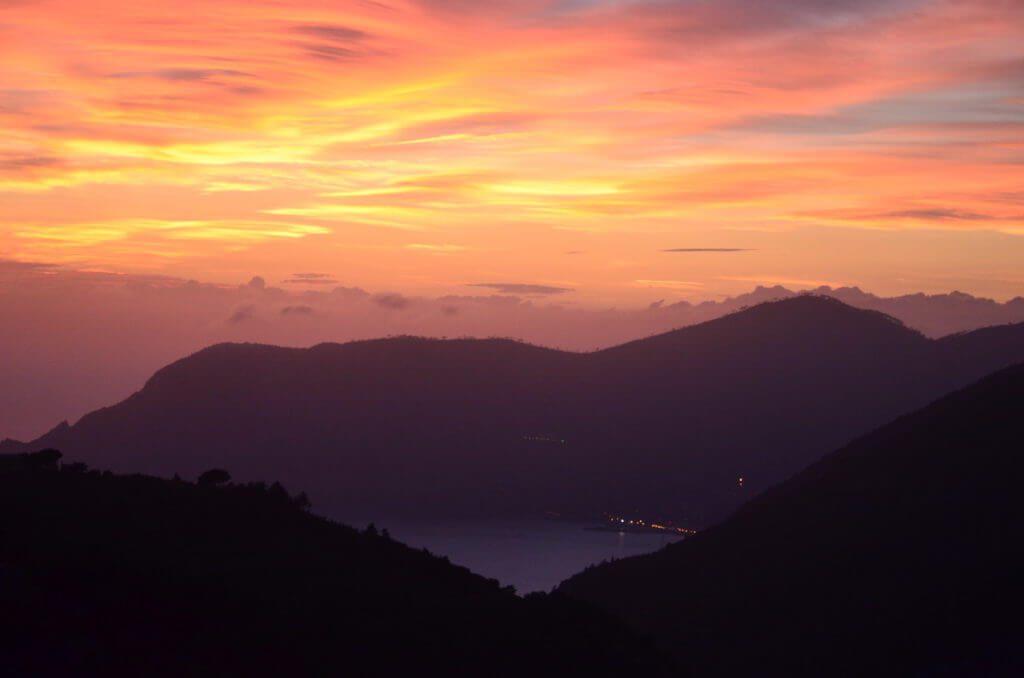We were charmed by Cinque Terre in the Italian Riviera

After Bob and I left the Leaning Tower of Pisa, we continued west towards the coast of the Ligurian Sea. Our goal was the region known as Cinque Terre, a narrow coastal strip that comprises 5 villages sandwiched between the sea and the mountains. It is fondly referred to as the Italian Riviera.
To reach Cinque Terre, we had to pass through La Spezia, which lies on the border between Tuscany and Liguria. La Spezia lies at the head of the Gulf of La Spezia and is home to a significant commercial and military harbour as well as a major naval base.
It is possible to board a train in La Spezia that connects with the 5 villages of Cinque Terre, but Bob and I chose to drive the narrow, sinuous cliffside roads to immerse ourselves in the countryside.
The drive required nerves of steel, but we were up for the challenge and appreciated having the flexibility to stop whenever we saw something of interest.
The rugged coastline and mountainous terrain of Liguria shaped the 5 villages of Cinque Terre, and even today, the lack of roads perpetuates the feeling of remote authenticity and sense of profound isolation.
Tucked away in a particularly mountainous kink of the Italian Riviera, each of the villages, Monterosso al Mare, Vernazza, Corniglia, Manarola, and Riomaggiore, has been carved into the Maritime Alps and the Apennine Mountains.
As far back as the early medieval period, villagers have built improbably steep terraces that seem to rise directly from the sea. The miles and miles of dry stone walls required back-breaking, time-consuming and dangerous work.
Designated as a UNESCO World Heritage Site, Cinque Terre National Park encompasses the five villages, coastline and surrounding hillsides. Riomaggiore was the first village we set eyes upon, and even from afar, we were smitten with the arrangement of colourful houses sliding down the side of a steep ravine.
The town of Riomaggiore is separated from both the wharf and the train station by tunnels. Even from afar, we could see a few dinghies moored in the tiny harbour adjacent to a pebbly beach.
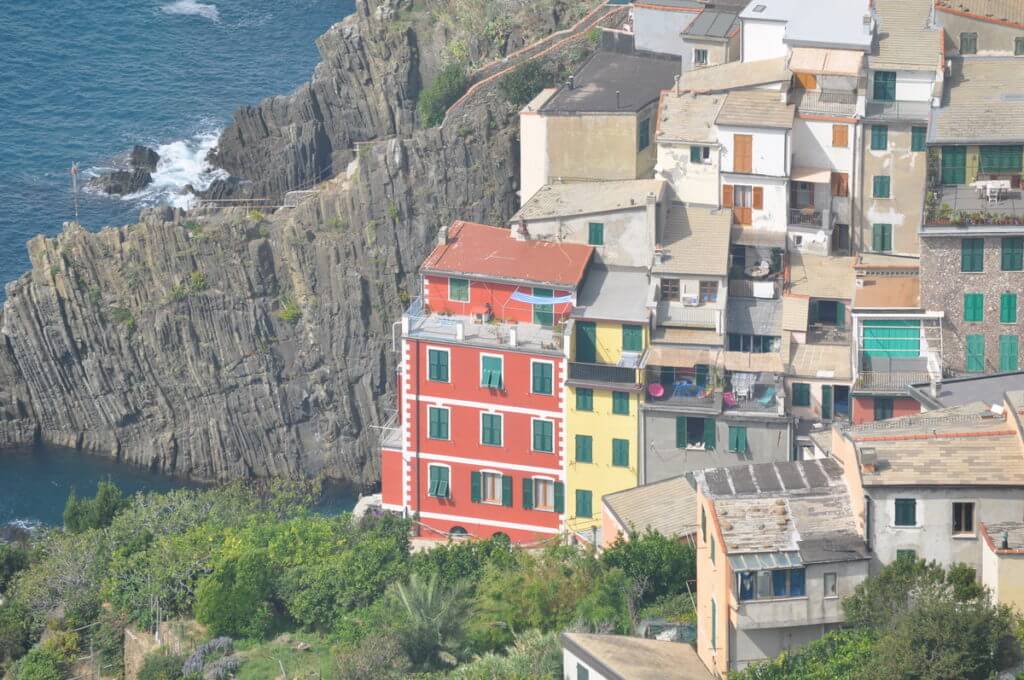 Most of the village is squeezed into the narrow, steep valley of Rio Maggiore. The tall, narrow houses once lined the banks of the river that still flows underneath the main street, but it is now covered and paved over. The stream was the inspiration for the name of the town.
Most of the village is squeezed into the narrow, steep valley of Rio Maggiore. The tall, narrow houses once lined the banks of the river that still flows underneath the main street, but it is now covered and paved over. The stream was the inspiration for the name of the town.
For those visitors with time to spare, there is a cliffside walking trail that connects Riomaggiore to the next town, Manarola. Called La via dell’Amore, the Way of Love, it is a one-kilometre stretch of pedestrian walkway that, in its day, connected the two isolated communities. The lofty promenade made it possible for star-crossed lovers to meet despite being separated by mountainous terrain.
La via dell’Amore was hewn into the impregnable sheer cliffs in the 1920s and snakes around the headlands as it progresses west. Sadly, the trail was closed when we visited owing to a rockslide in 2012 that injured 4 tourists. It is expected to reopen in 2021.
Looking back at Riomaggiore really put into perspective the old town where it sits on top of the world.
Despite the brilliant sunshine, low-hanging clouds were moving in over a distant peninsula.
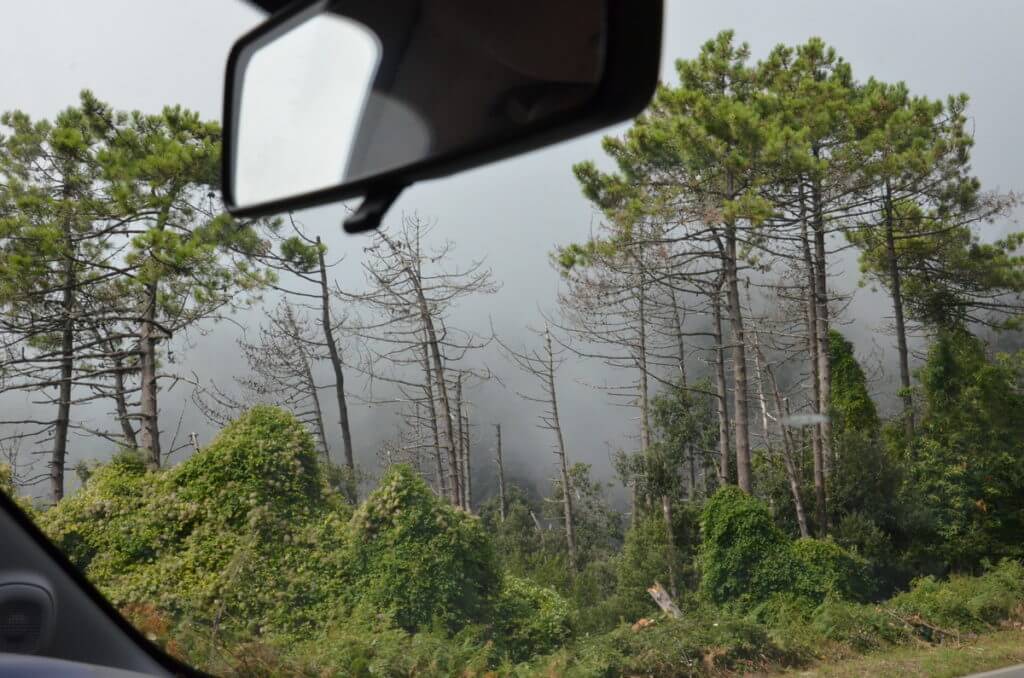 At times, we were driving blind when dense fog smothered the hillsides and smeared our windshield,
At times, we were driving blind when dense fog smothered the hillsides and smeared our windshield,
but we still managed to spot this Eurasian Jay when we slowed to navigate one sharp corner in the road.
Paths, trains and boats provide the major connection between the 5 communities of Cinque Terre. Only a few roads into the towns are accessible by car because they are too narrow. People must walk in from parking lots on the outskirts. Bob and I encountered many tunnels through the mountains along the main highway in Cinque Terre.
As hard as it was for Bob and me to believe, Manarola is only 500 metres further along the coast from Riomaggiore. Driving the circuitous route made it seem much further. In this photo, you can see in the background La via dell’Amore where it approaches the village along the sheer cliffs.
Manarola is perched on a huge, rocky prominence overlooking the sea. The collection of colourful houses occupies space previously dominated by a castle. As we looked across the water, one of the many ferries that shuttles people between the villages was pulling up. Passengers would have a steep climb up to the village.
The coastline of Cinque Terre is defined by the incredible terracing surrounding the towns. Interrupted only by a complicated arrangement of fields and gardens that have been chiseled and hacked, shaped and layered over a thousand years, the terraces provide the space to cultivate grapes and olives on the steep hillsides.
The vineyards around Manarola and Volastra, seen above, provide the grapes for Cinque Terre wine, Sciacchetrà. This sweet, golden dessert wine is made using traditional methods passed down from generation to generation. Long before tourism drove the economy in Cinque Terre, it was winemaking that supported the livelihood of the region.
Next on our radar was Corniglia, the only town in Cinque Terre that lacks direct access to the sea. As a result, ferries are unable to service this community. Perched atop a 100-metre high rocky promontory, the village is also inaccessible by car.
From afar, with the turquoise waters of the Ligurian Sea framing the thunderous green mountains and craggy headlands, Bob and I could see a train hurtling along the track towards another tunnel.
As in Riomaggiore and Manarola, the train station is at sea level. In Corniglia, travelers must ascend a flight of almost 400 switchback stairs from the rocky cove and its waterfront train station to reach the village. Bob and I opted to make a stop here, so we parked our tiny rental car, unfolded our limbs and strolled a good distance to the main street.
We had the luxury of walking downhill into Corniglia, and it gave us an appreciation for even the vernacular architecture. This home was fetching painted as it was like a ripe apricot. Hung with colourful laundry, it completed the picture of daily life that has gone on here for centuries.
Corniglia is the smallest of the five villages in Cinque Terre, and part of its charm lies in its tranquil, tangled alleys and perfectly preserved architecture. Bob and I soaked up the ambience as we descended to the main street…
and took pleasure perusing the wares on offer at many shops.
Following the main alley brought us to a spacious, breezy terrace overlooking the sea. Manarola was visible back down the coast,
and we had dandy views of the rugged shoreline looking towards Vernazza.
What captured our interest from the lookout was the rich variety of cacti…
and succulents growing on the inhospitable rocky cliffs just below us.
A luxuriant spread of flowers attracted a Corsican Swallowtail Butterfly that occupied our attention for many long minutes before we navigated the narrow streets back to our car.
Motoring along, there was no lack of interesting views.
San Bernardino sat snug, nestled along a ridge above Corniglia.
We glimpsed sections of a hiking trail tucked up against ancient stone walls that retain the terraced land. A shortage of time and overwhelming heat had Bob and me deciding to pass on that activity.
Ascending the steep contours of the mountains back to Highway SP51, we had a fantastic rear view of Corniglia and Manarola as we turned the car towards Vernazza.
Little did we know that, just a short distance from Corniglia, we would run smack dab into a roadblock! A rock slide had forced the road closure so we were obliged to retrace our route back to La Spezia and take a detour around the northern border of Cinque Terre National Park to its west side. That cost us quite a bit of valuable time.
I gotta say that driving the main road was exhilarating! Often, oncoming traffic would hog the road, and especially at corners, caution was demanded because cars would routinely meet you head-on. It was the way drivers managed the curves in Italy.
The afternoon was getting away from us as we neared Vernazza, and shadows were deepening when we pulled into a crowded parking lot a kilometre from town. Car traffic is banned from the streets of Vernazza except for emergency and authorized vehicles.
As we ambled along the narrow lane, glimpses of Vernazza’s past were afforded to us in the crumbling remains of centuries’ old buildings that seemed to grow out of the rock faces themselves.
Even foundations of rock structures sprouted from the bank of the tiny Vernazzola River that kept us company as we walked along. The river is now covered over, but it once cascaded down the mountainside and coursed through the middle of town.
Finally we emerged at the main square in Vernazza. Founded in 1000 A.D., the town is considered the prettiest in Cinque Terre with its sea-facing arrangement of pastel-coloured houses surrounding Piazza Marconi.
The Ligurian Sea laps the shore of the quaint harbour within sight of Piazza Marconi. It is the only natural harbour along this stretch of the Ligurian Sea and was Vernazza’s raison d’etre.
The port was abuzz with activity the afternoon of our visit. Scores of dinghies were available for hire if tourists wanted to take a tour of the coast and appreciate the villages from the water.
Many sun seekers took up a spot on the walkway next to Santa Margherita Dantiochia Church…
and within view of the ferry boats coming and going, the restaurants and cafes brimming with people in the square…
they relaxed or took a dip to get some relief from the relentless heat.
It was easy to imagine boats tied up alongside the houses during medieval times when no beach or proper port facilities existed. We saw boats clogging the town centre where they were hauled well clear of the harbour.
Vernazza established itself centuries ago as the only safe place for ships to stop and pick up the region’s fine local wine. That distinction brought with it invading pirates that forced villagers to hide in the hills in their vineyards and olive gardens.
Around 1080 AD, Doria Castle was constructed, and a strong military presence established to help protect the port from marauders. Belforte Tower is the oldest part of the castle complex and one of many watchtowers that spiked the coast to warn of impending invasions.
Looming over the seaside terrace in Vernazza were the walls of Doria Castle. Built as it was on a steep outcrop, and modified over time, it has a very irregular shape.
Before settling into a cozy cafe for dinner, Bob and I lingered at dockside. The sun still blazed, and the tracery of stone walls radiated the heat of the 35-degree day.
The sun-drenched piazza was the perfect place to watch as the sky faded to gold while a light breeze bewitched me with the salty scent of the sea. The air became cooler and our appetites tempted by savoury aromas wafting from the many kitchens scrambling to serve the crowds of tourists.
Yet another boatload of sightseers was whisked away for a quick tour of the coastline, while we lingered over a glass of local wine.
With darkness now settling over the quiet cove, Bob and I had to turn our thoughts to navigating the caruggi, the narrow streets, and trudging up the ravine back to our parked car.
From on high, we had exceptional views of a blazing sunset so made an abrupt stop for a few quick photos,
and that provided our only view of the fifth and final village in Cinque Terre, Monterosso al Mare nestled in a cove and licked by the calm night sea. The rock slide that had blocked the roadway had been cleared, and we had clear sailing all the way back to our little stone cottage in Gaiole. What a way to end the day!

